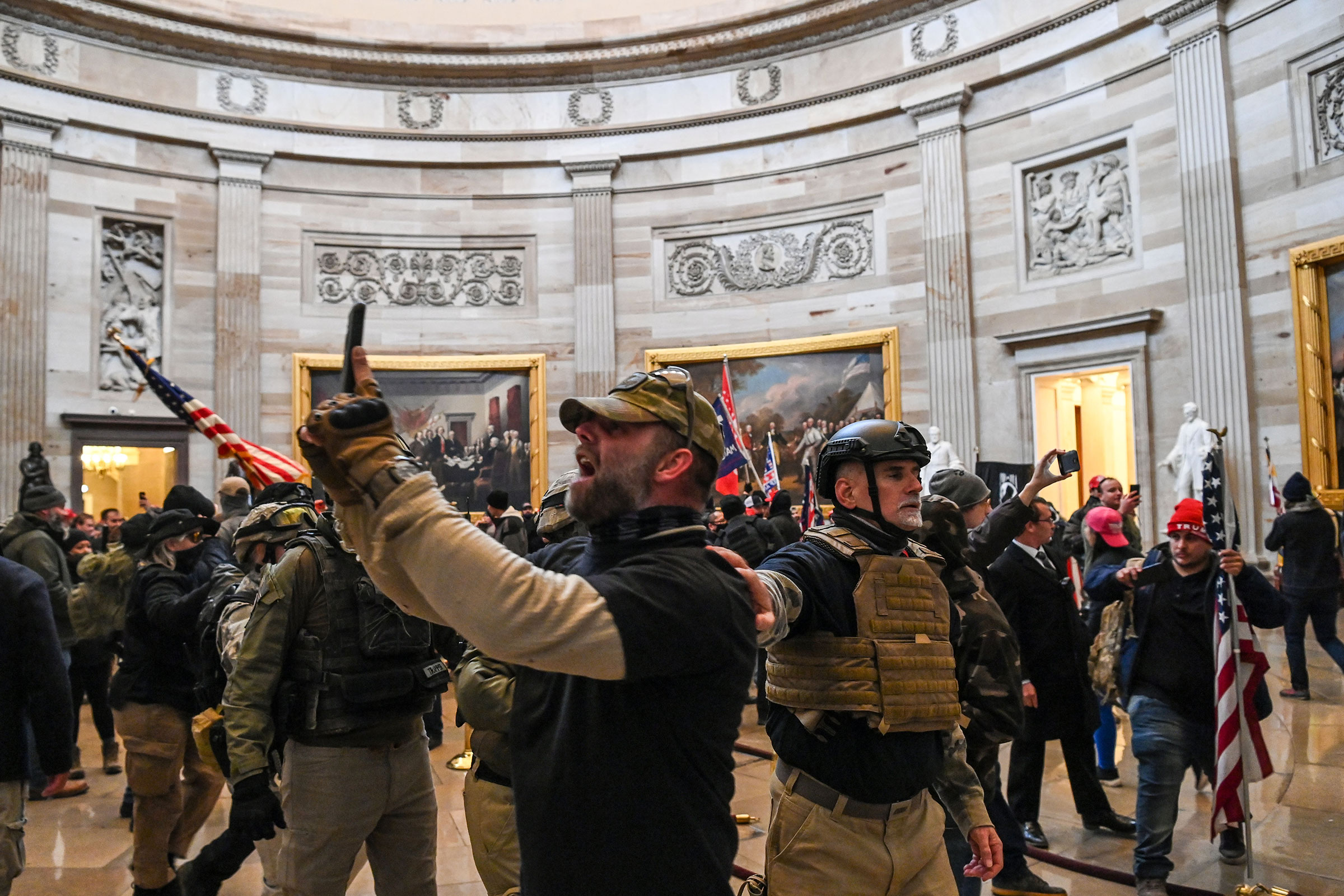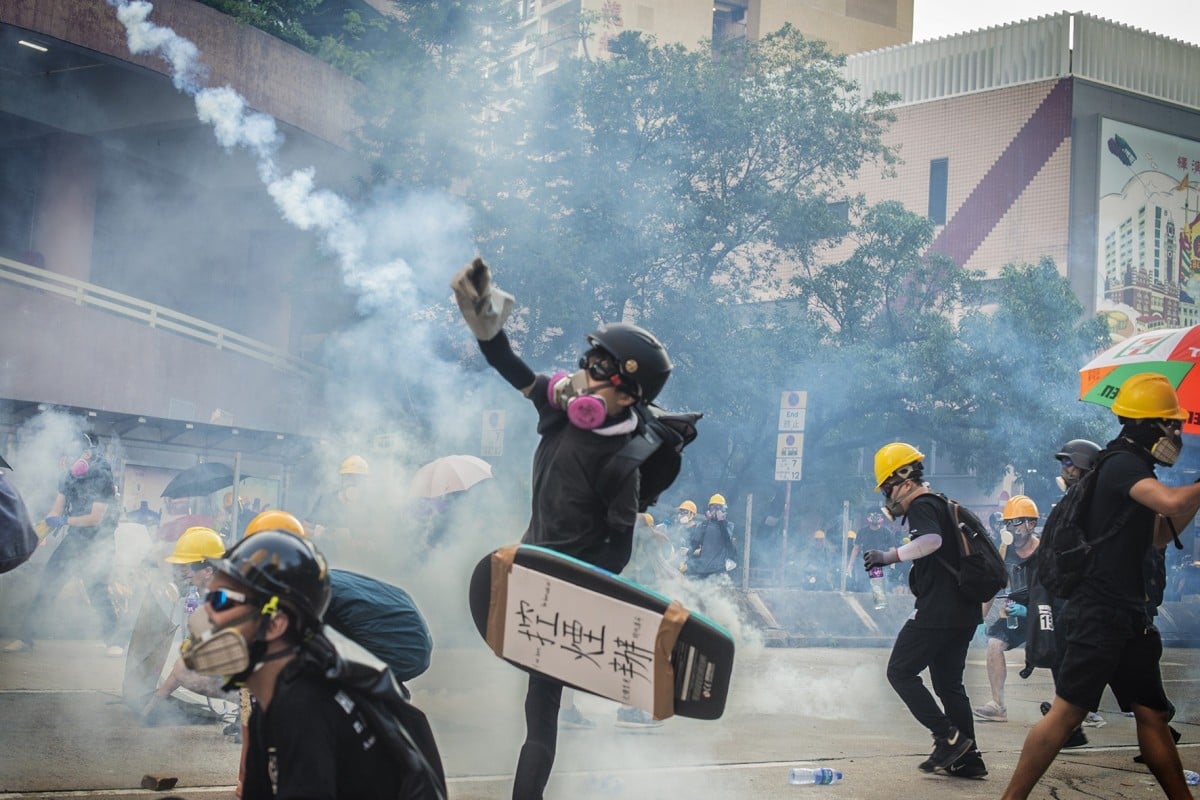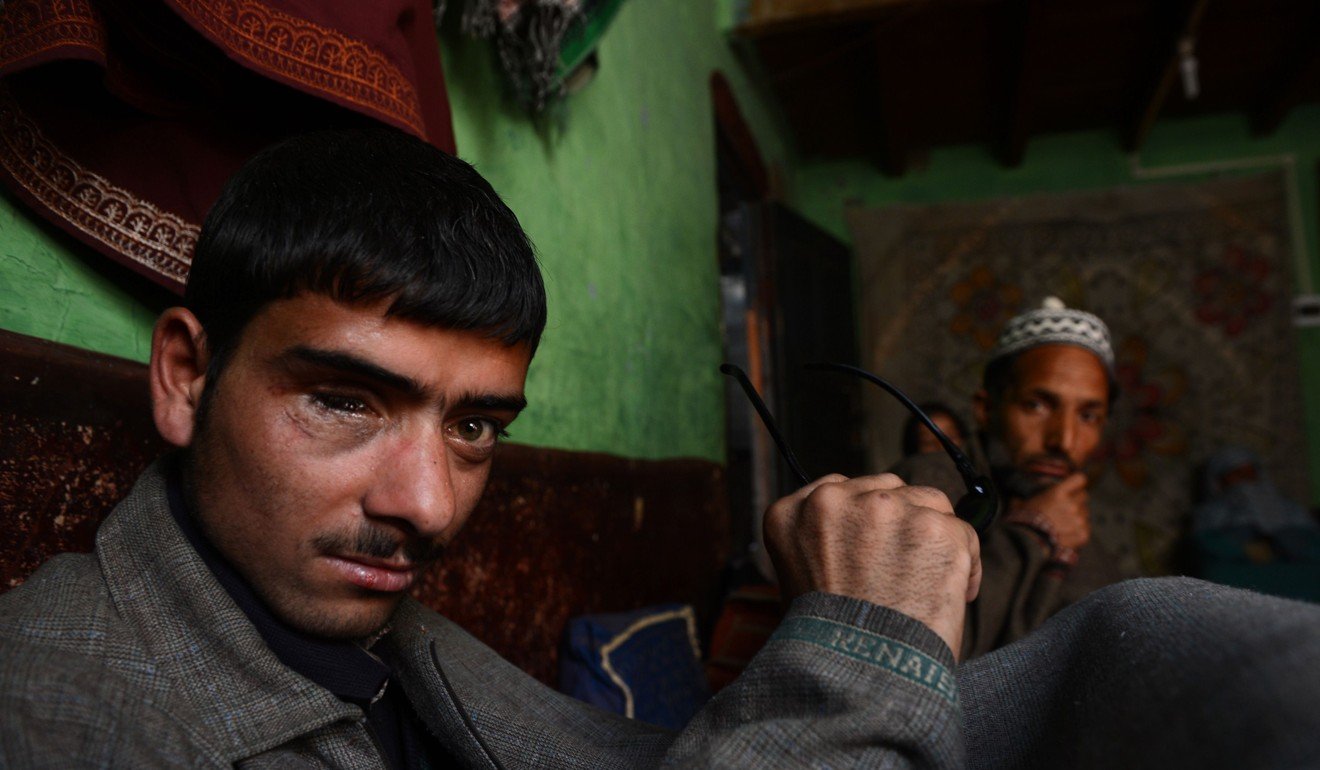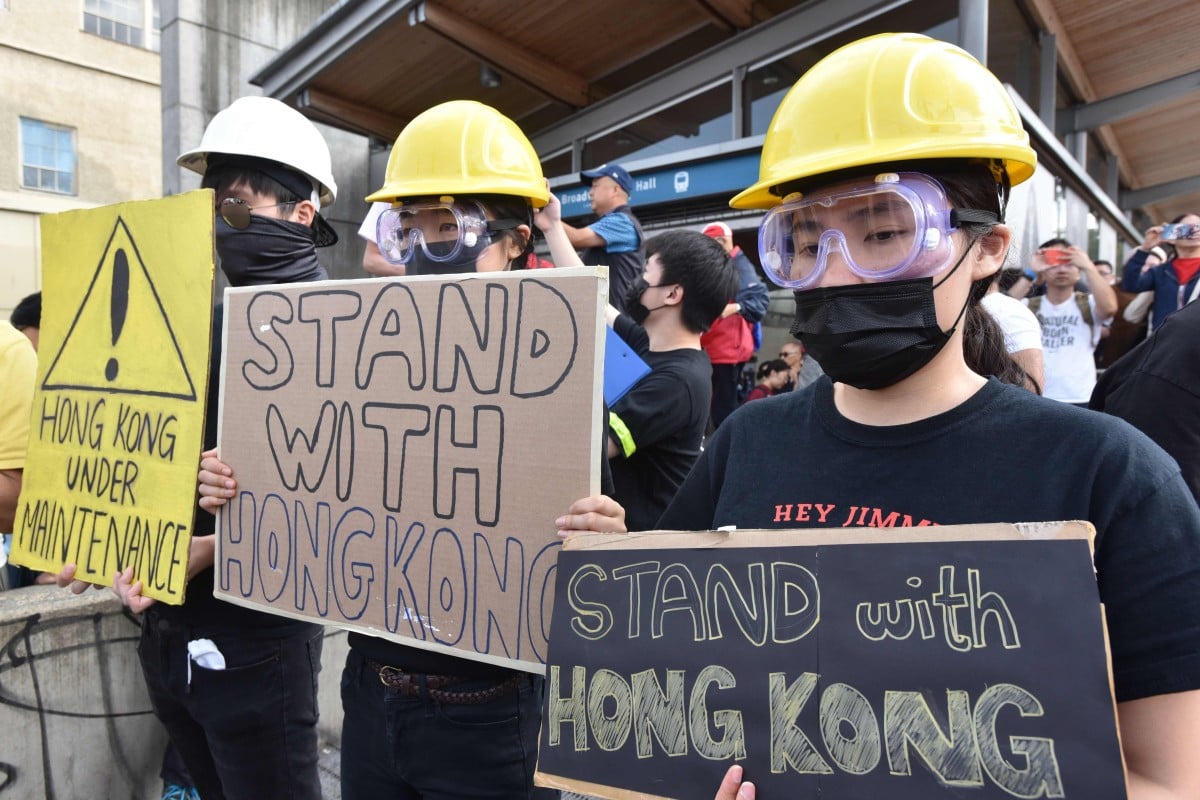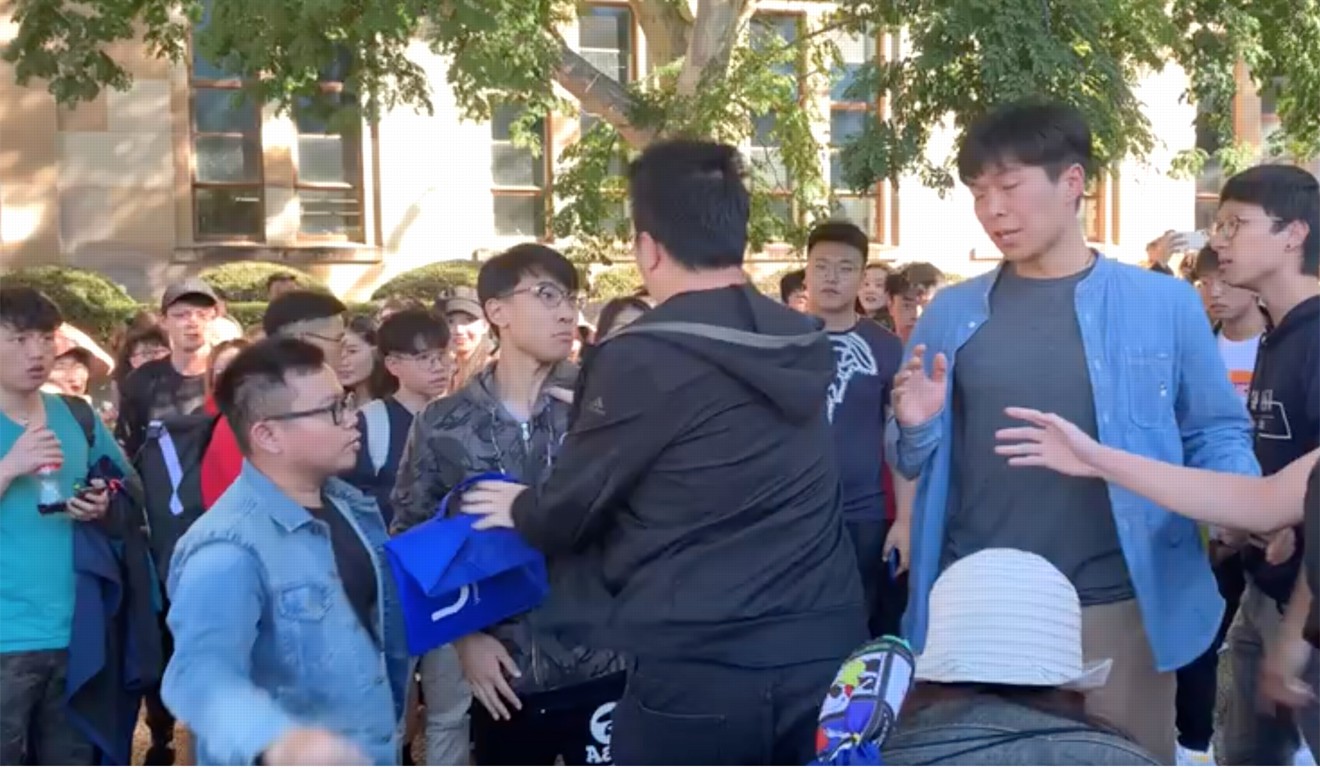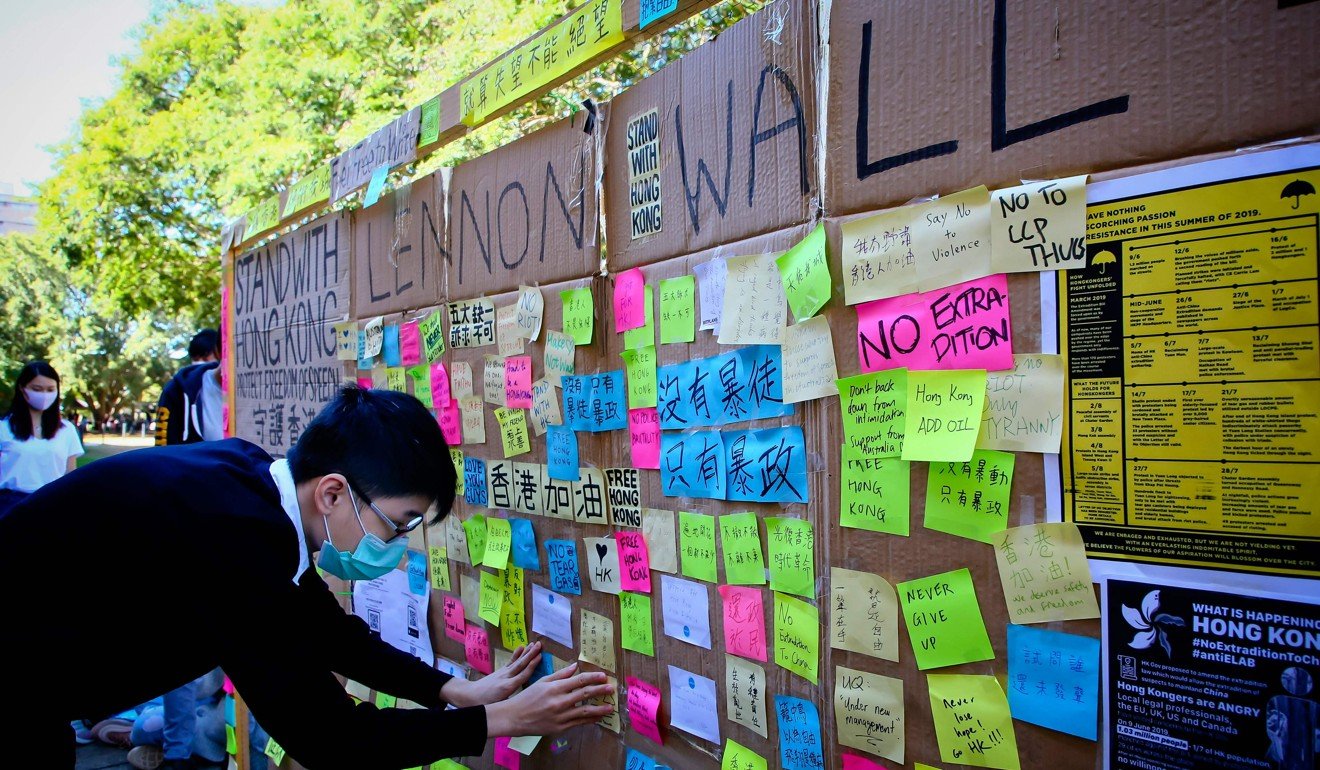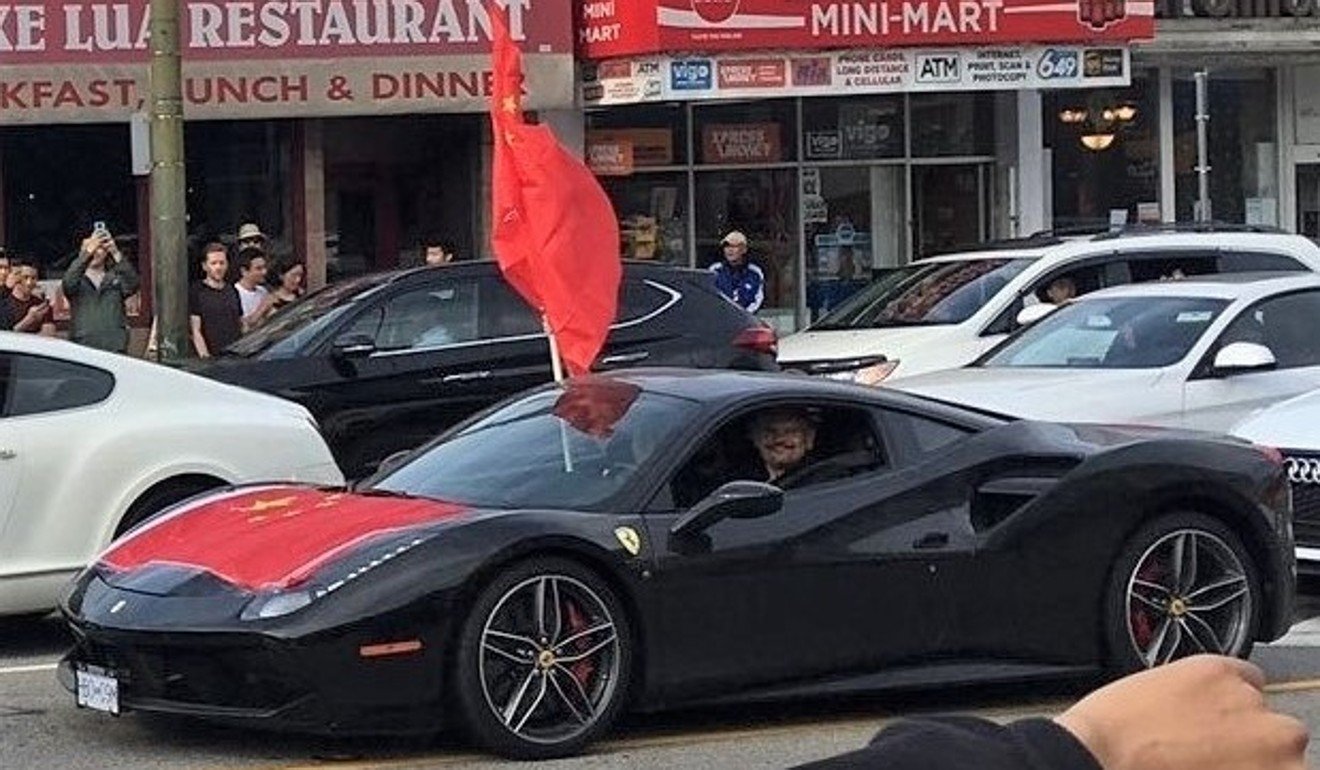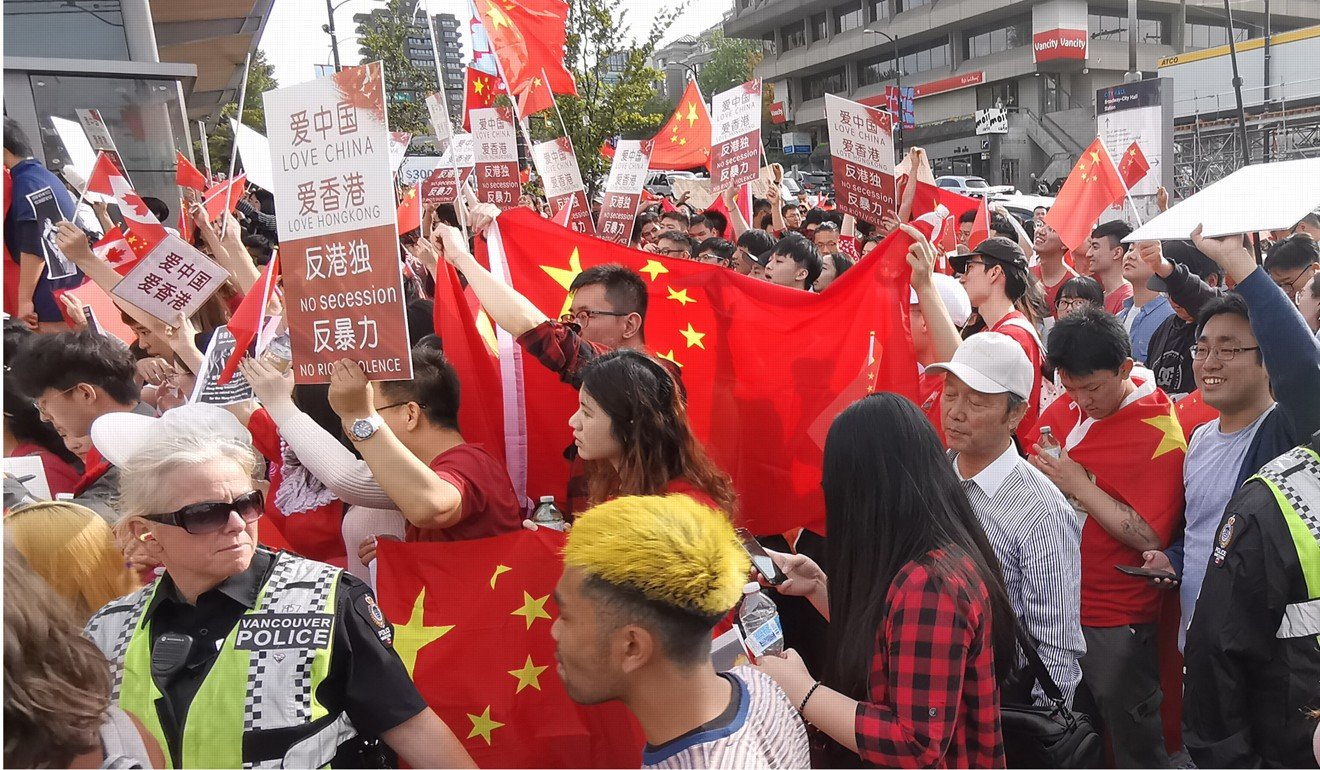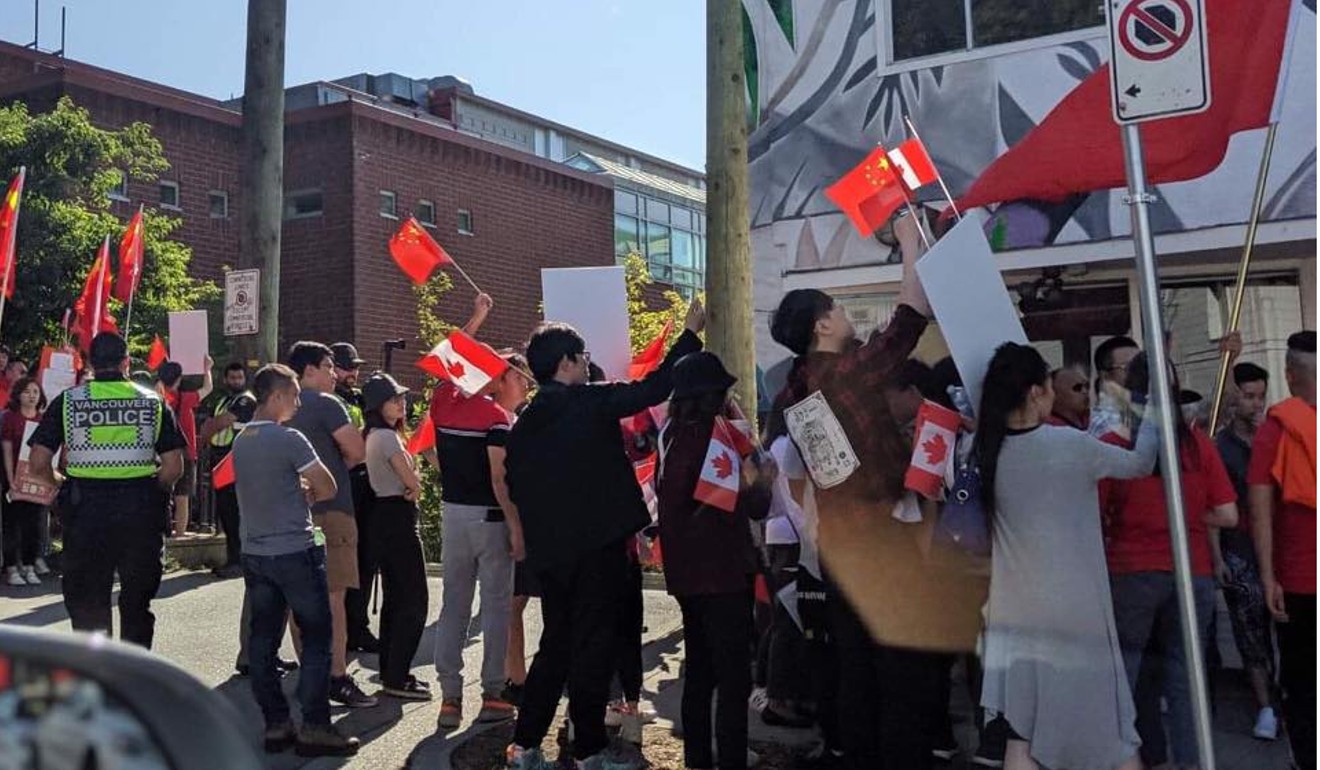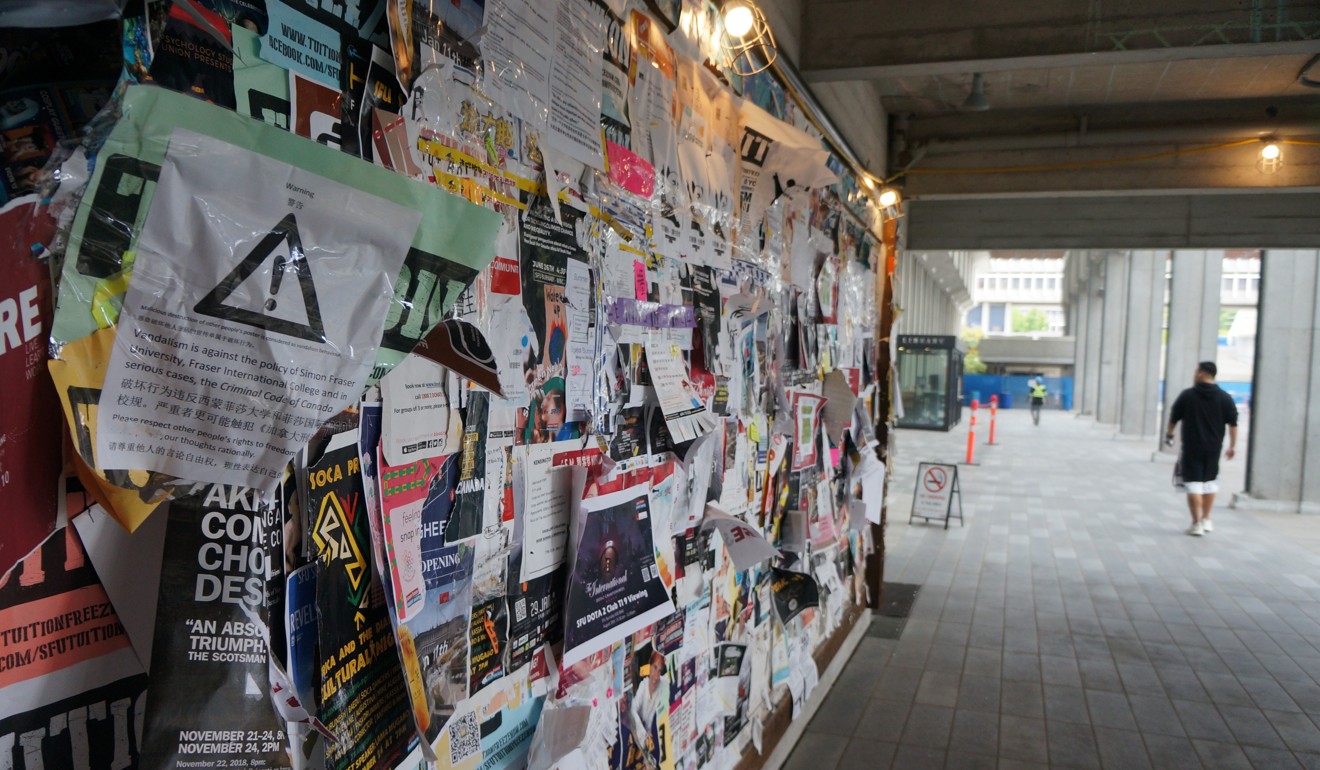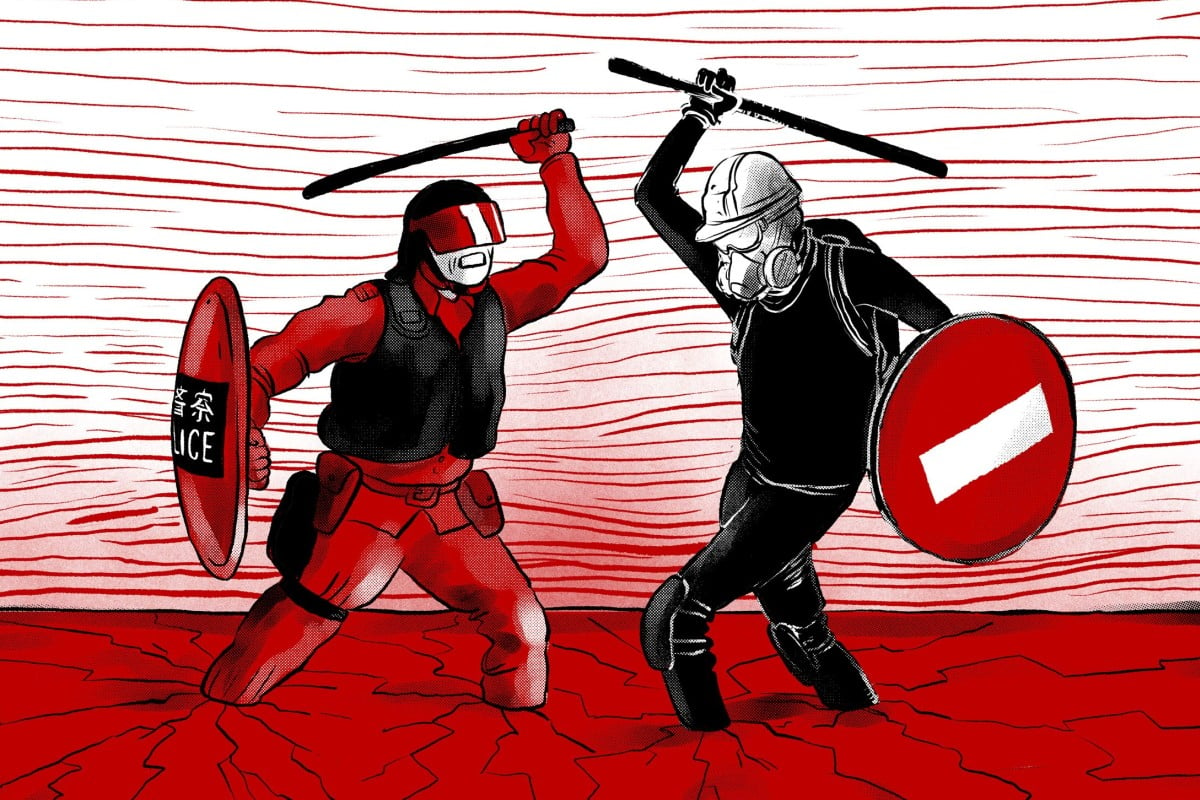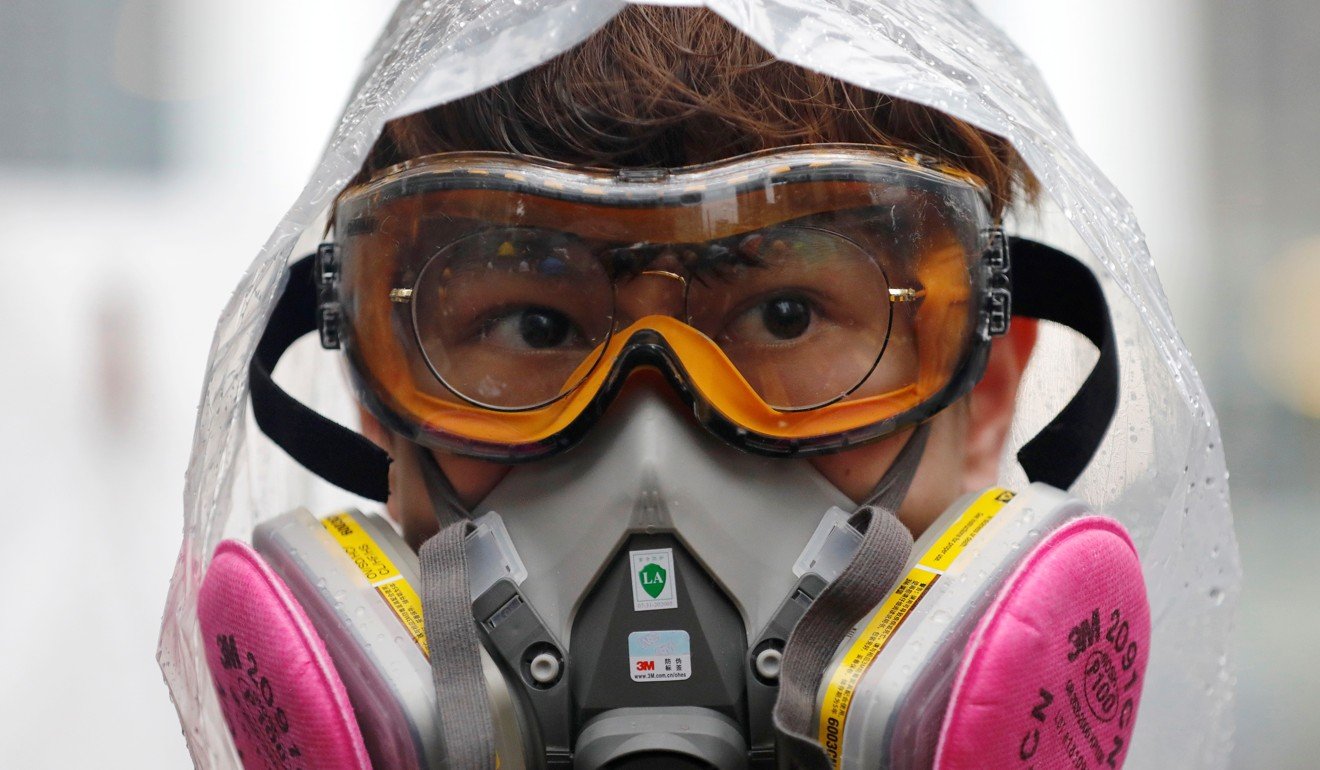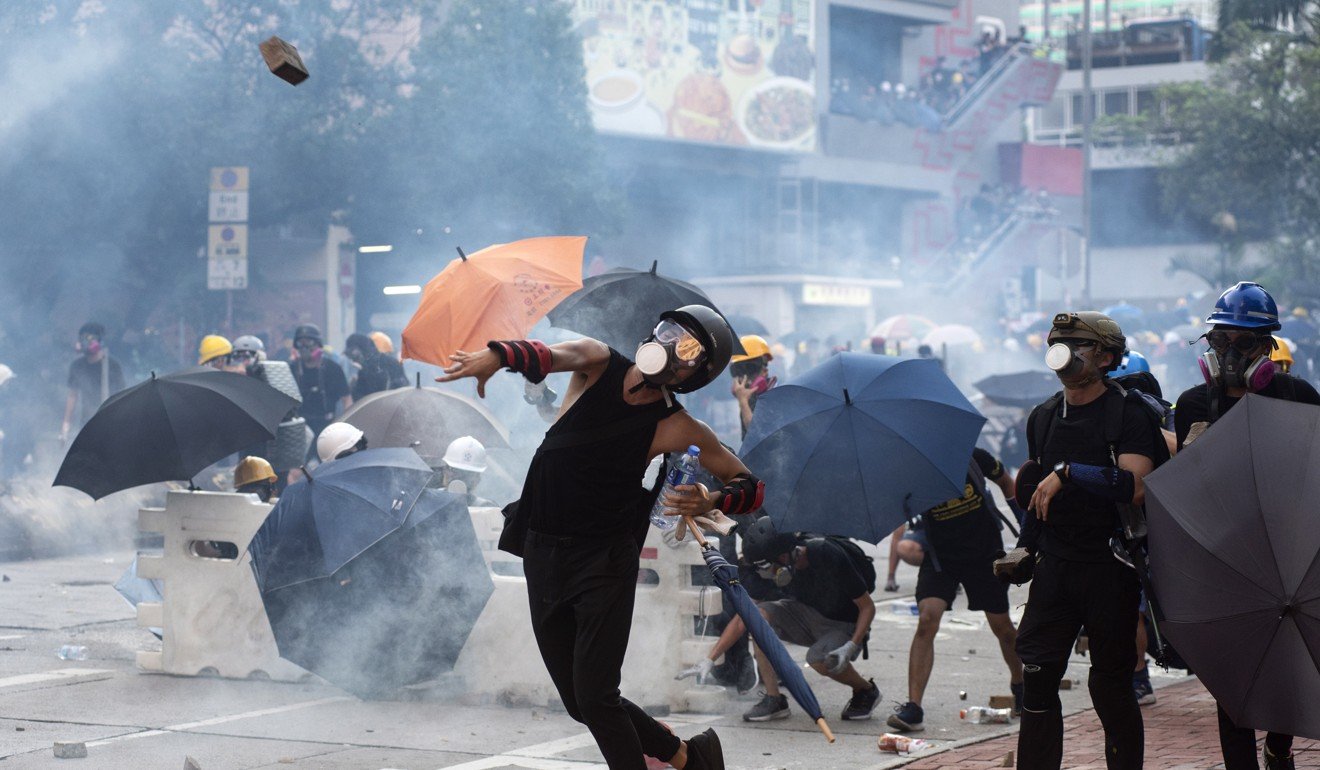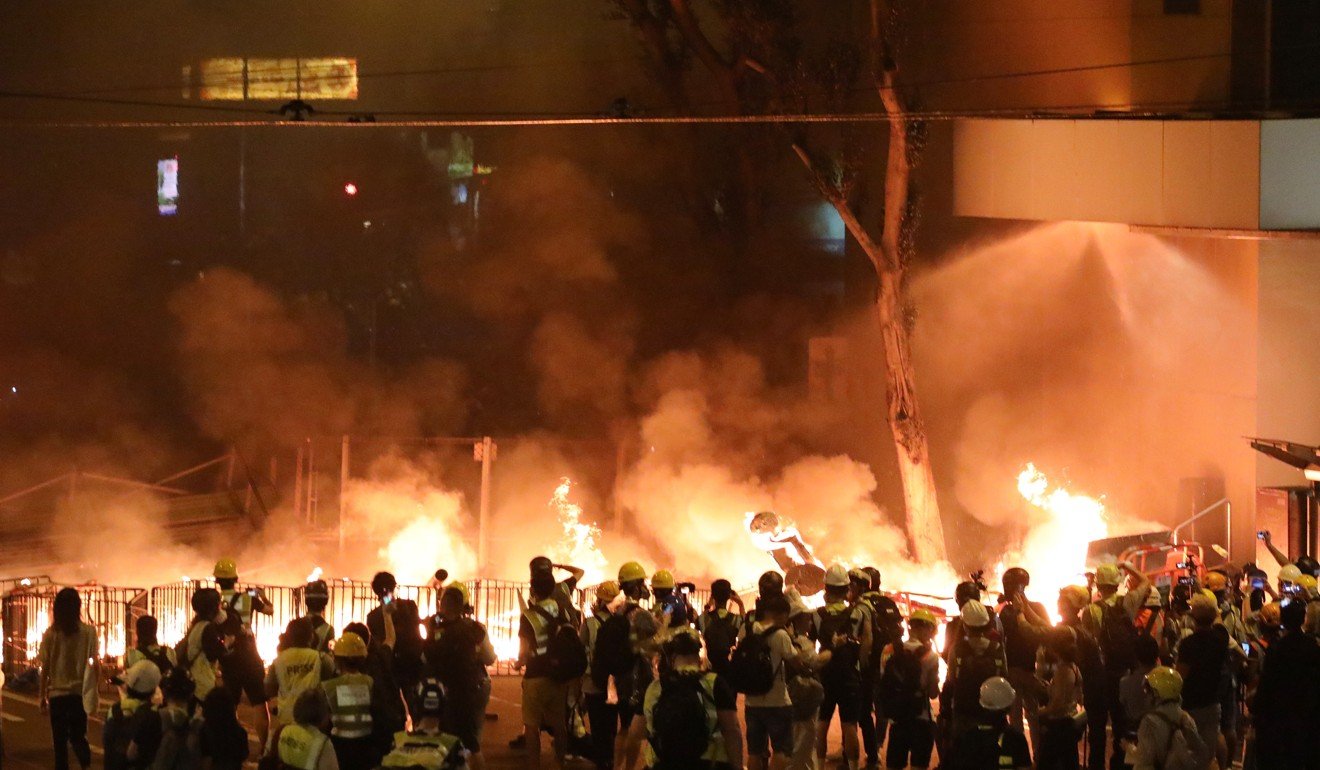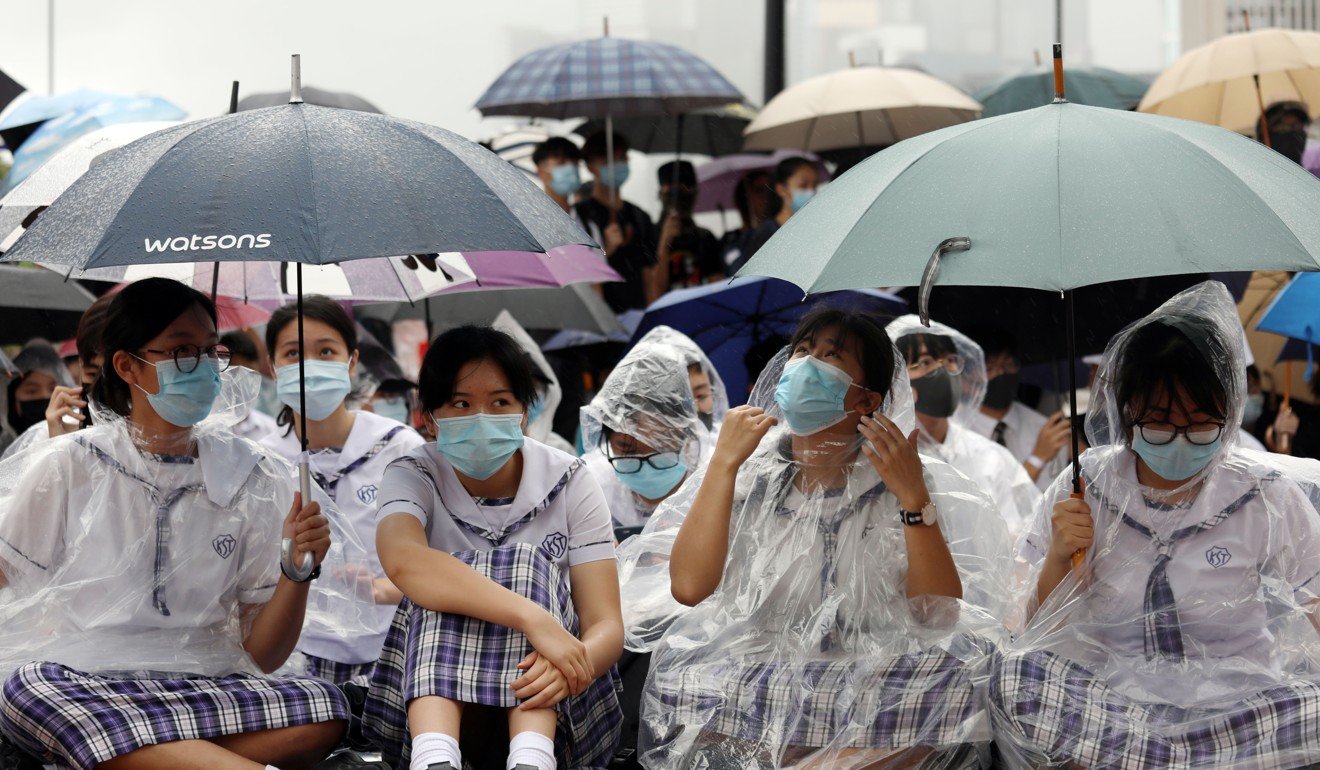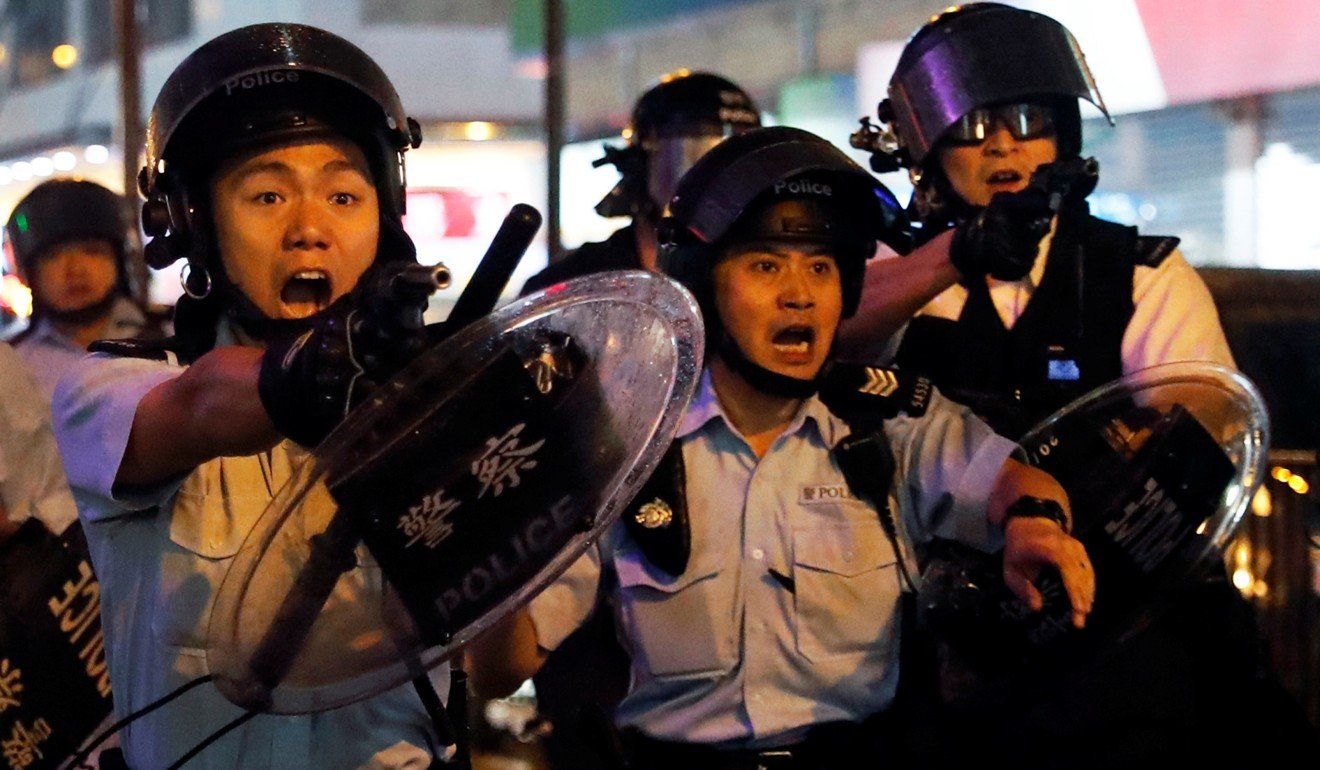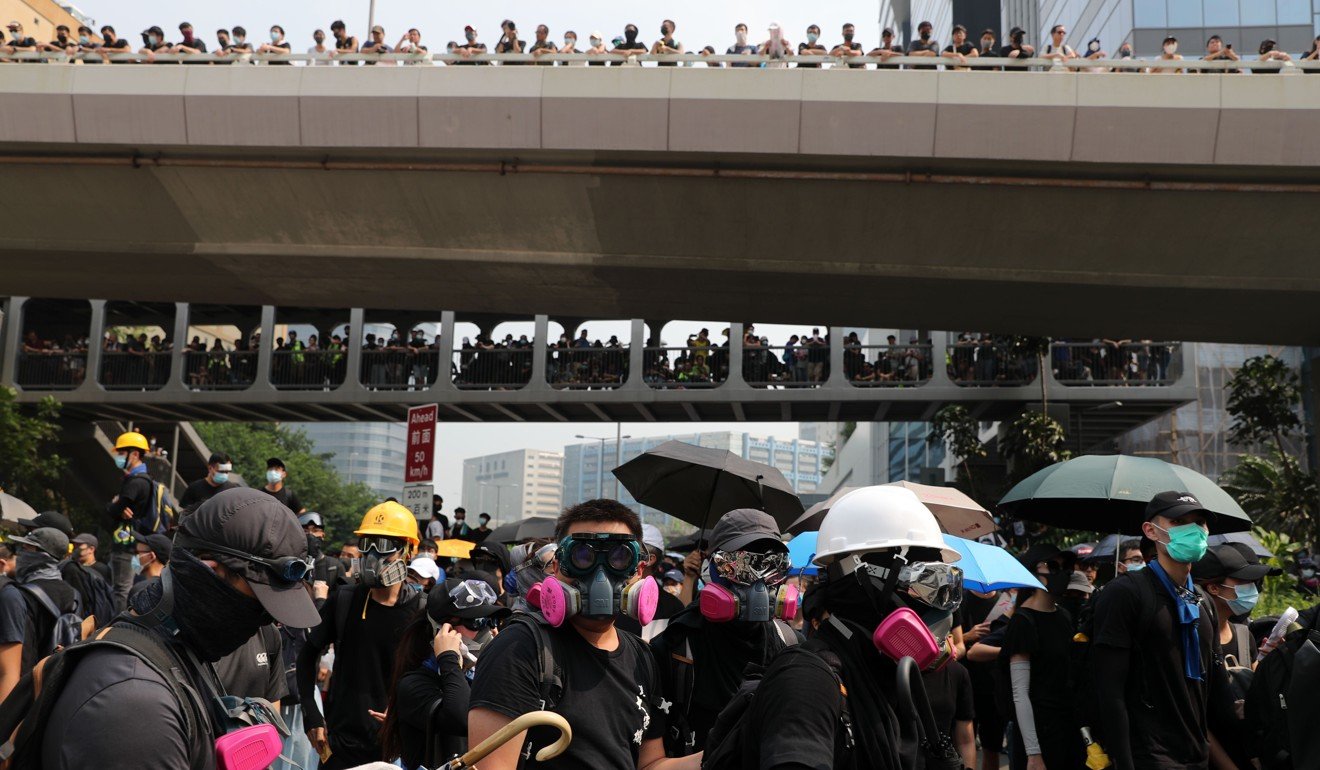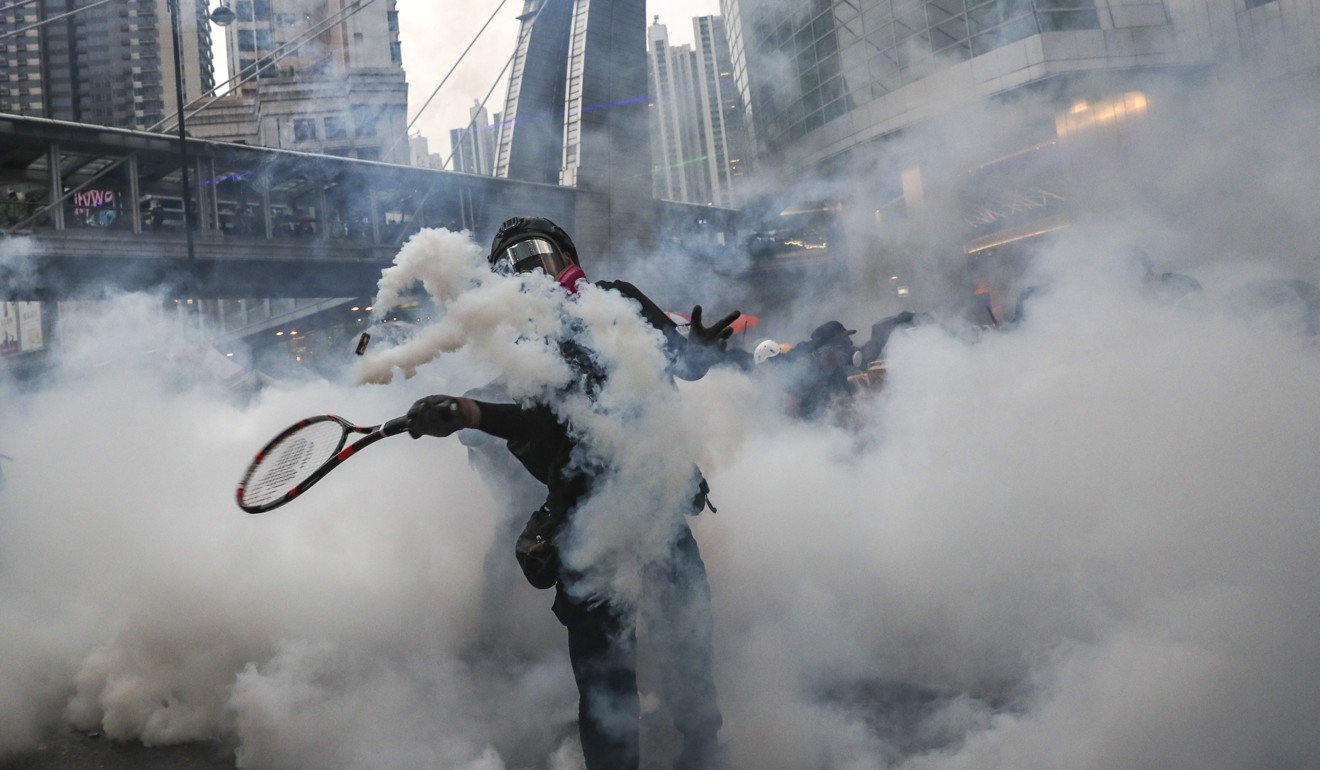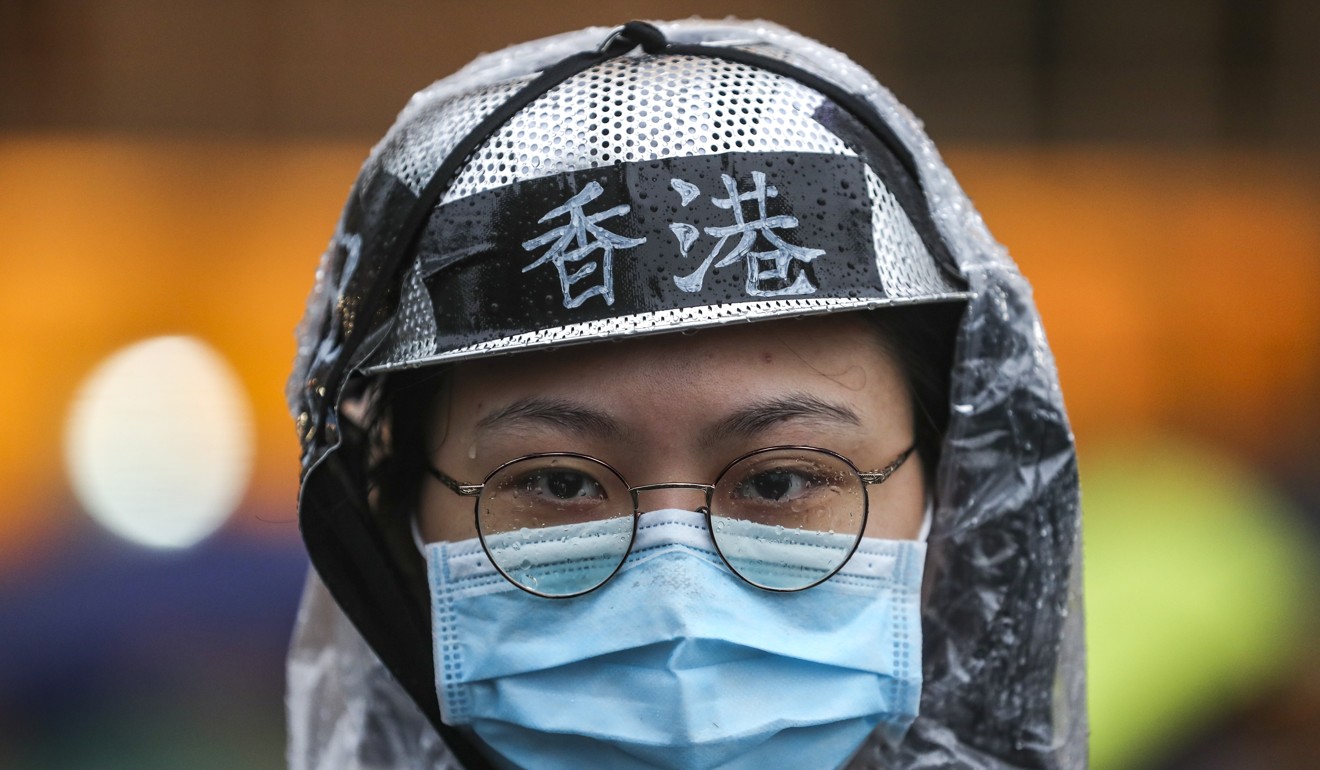Bin Laden's Fantasy, Trump's Reality https://t.co/EEG38yG68u #harris2024 @VP @KamalaHarris @AOC @RepAOC @RoKhanna @paragkhanna @reshmasaujani @AndrewYang @LiuNewYork @TheJusticeDept @justicedems @sunrisemvmt @CNN @nytimes @republic @HulakiNews @drckraut @PrashantKishor #2024
— Paramendra Kumar Bhagat (@paramendra) September 17, 2021
Friday, September 17, 2021
Bin Laden's Fantasy, Trump's Reality
Tuesday, September 14, 2021
News: September 14
7 Things Gaslighters Will Say to Confuse and Control Gaslighting phrases to make you question your reality. ....... 1. "Wipe the slate clean." ........ 2. "It’s all water under the bridge." ........... 3. "I really don’t know what I’ve done." ...... When someone looks sad and confused as you start to make your case (and it’s a tactic gaslighting mothers, among others, often employ), it can force you to stop in your tracks and ease up on your accusations. It also suggests the gaslighter has no idea what the problem is, or what their involvement is. ........... 4. "I won’t stand for lies/dishonesty/a lack of professionalism." ........ Do gaslighters know, deep down, that they’re going to spin a complex web of lies and deceit ........ 5. "I have no idea what you’re talking about." ......... The gaslighter can simply claim to have no idea why you’re upset or angry and no knowledge of whatever it is you might be calling them out for. They just don’t know. .......... And because they play the innocent card so effectively, you’re left questioning if you really are over-exaggerating, or whether they have done anything at all wrong........... 6. "Don’t take it so personally." ........ What the gaslighter is doing in all these cases is invalidating your experience. ........... 7. "Nobody else feels that way." ........ Gaslighters, who are often also narcissists, need to get other people on their side and are masters of coordinating a group of sympathisers. ........ The language of gaslighting is designed to protect the gaslighter while making you call your own experience into question. It’s designed to silence you, warp events from the past, and make the gaslighter look like the good guy and you look like a highly emotional, over-reactive fantasist. ........
It’s so confusing to be on the receiving end of a gaslighter’s comments that you may even find yourself shocked into silence.
.......... displaying charm, feigning innocence, and faking an attempt at reconciliation—is likely a classic case of the gaslighter using their manipulation techniques to place the other party on the back foot. ........ If you need help in overcoming the effects of gaslighting, please seek out the help of a suitably qualified therapist.7 Stages of Gaslighting in a Relationship How gaslighters emotionally manipulate, traumatize, and exploit victims. ........ At its worst, gaslighting can reach the level of mind control and psychological abuse. Gaslighting tactics include creating a negative narrative about the gaslightee and an unequal power dynamic. ........... Gaslighting is a form of persistent manipulation and brainwashing that causes the victim to doubt her or himself, and ultimately lose her or his own sense of perception, identity, and self-worth. ........... In its milder forms, gaslighting creates a subtle, but inequitable, power dynamic in a relationship, with the gaslightee subjected to the gaslighter’s unreasonable, rather than fact-based, scrutiny, judgment, or micro-aggression. At its worst, pathological gaslighting constitutes a severe form of mind-control and psychological abuse. Gaslighting can occur in personal relationships, at the workplace, or over an entire society. ........... By staying on the offensive, the gaslighter eventually wears down their victim, who becomes discouraged, resigned, pessimistic, fearful, debilitated, and self-doubting. The victim begins to question her or his own perception, identity, and reality. ......... In a gaslighting relationship, the gaslighter elicits constant insecurity and anxiety in the gaslightee, thereby pulling the gaslightee by the strings. The gaslighter has the power to grant acceptance, approval, respect, safety, and security. The gaslighter also has the power (and often threatens to) take them away. A codependent relationship is formed based on fear, vulnerability, and marginalization. ........... As a manipulative tactic, the gaslighter will occasionally treat the victim with mildness, moderation, and even superficial kindness or remorse, to give the gaslightee false hope. In these circumstances, the victim might think: “Maybe he’s really not THAT bad,” “Maybe things are going to get better,” or “Let’s give it a chance.” But beware! The temporary mildness is often a calculated maneuver intended to instill complacency and have the victim’s guard down before the next act of gaslighting begins. With this tactic, the gaslighter also further reinforces a codependent relationship. ..............
At its extreme, the ultimate objective of a pathological gaslighter is to control, dominate, and take advantage of another individual, or a group, or even an entire society.
By maintaining and intensifying an incessant stream of lies and coercions, the gaslighter keeps the gaslightees in a constant state of insecurity, doubt, and fear. The gaslighter can then exploit their victims at will, for the augmentation of their power and personal gain.Are Gaslighters Aware of What They Do? Do gaslighters know they're manipulative, or do they do it without realizing it? ......... Some people who gaslight others are aware of their actions and have even studied how to improve their techniques. A gaslighter who is unaware of their actions continues their behavior because of the "payoff" or "boost" they get from it each time.
Childhood experiences, a desire for control, or a personality disorder are common reasons a person may gaslight others.
........... Gaslighting is a pattern of manipulation tactics used by abusers, narcissists, dictators, and cult leaders to gain control over a person or people. The goal is to make the victim or victims question their own reality and depend on the gaslighter. ........... Some gaslighters may have learned it from others—in many cases, their own parents. If a parent lives with addiction or other mental health issues, gaslighting may be used to manipulate a child into keeping quiet about abuse and/or addiction.Gaslighting may be used by a parent in order to alienate the child from the other parent.
............ in parental alienation, one parent may depict the other as a “deadbeat” and tell a child about the other parent’s “transgressions” in order for the child to align with the “reporting” parent and see him or her as the hero. .......... In the case of a person who has a personality disorder such as antisocial personality disorder, they are born with an insatiable need to control others and deep-seated anxiety. ..........It can be very difficult to get ego-syntonic gaslighters into treatment; they believe nothing is wrong with them.
A gaslighting spouse or partner may either refuse to go to therapy, or if they do attend with you, they may tell the therapist that you are the problem. If the therapist recommends that the gaslighter changes a behavior, the gaslighter will label the therapist as incompetent. ........... dependency is one of the goals of gaslighters. .......If a gaslighter is not aware of their manipulative behavior, that does not make it acceptable—it is still pathological, and it is still their responsibility.
Inside the cult of crypto “How’s this for a disruptive technology,” a user wrote on July 11 2010, enthusiastically describing a decentralised, peer-to-peer digital currency with no central bank, no transaction fees and beyond the reach of any government. Using computers to solve cryptographic puzzles would earn people “bitcoins”........ By 2013, DeRose, then aged 31, ditched his successful computer consulting business and threw himself wholeheartedly into the mushrooming cryptocurrency world, becoming a popular if controversial podcast host. ......... .. By 2017 — when the price of bitcoin took off like a rocket, going from under $1,000 per “coin” to almost $20,000 — early discussion had calcified into rigid dogma that bore little relation to reality. Bitcoin and its zealots were the strongest example of this, DeRose felt. ............ Cryptocurrency has over the past decade become a broad movement with its own language and symbols, driven by a constellation of prophets with varied but overlapping gospels, who treat both external and internal dissent as blasphemy and promise adherents that they form the intellectual vanguard to a bright new future........... many other classic hallmarks of culthood — apocalypticism, the promise of utopia for worthy believers, shunning of external critics and vitriolic denouncement of heretical insiders — are increasingly dominant. .......... “Crypto is essentially an economic cult that taps into very base human instincts of fear, greed and tribalism, combined with economic illiteracy as a means to recruit more greater fools to pile money into what looks like a weird, novel digital variant of a pyramid scheme,” argues Stephen Diehl, a crypto-sceptic software engineer. “Although, it’s all very strange because it’s truly difficult to see where the self-aware scams, true believers and performance art begin and end. Crypto is a bizarre synthesis of all three.” ........... Crypto’s most ardent proponents predict it will eradicate inequality, wipe out corruption and create untold wealth. Most cults make similarly expansive promises. And as the gulf between promise and reality grows, things get dark...........
Coinbase is now one of the industry’s biggest trading venues, and earlier this year listed its shares at a $76bn valuation
— more than the Nasdaq or the New York Stock Exchange owner ICE. “I went from thinking, ‘Oh, cool, I can program money’ to thinking I was part of a movement, a revolution founded on this technology,” Neil recalls.......... Many new cryptocurrencies appeared pointless. Even the promise of bitcoin itself started to lose its lustre on closer inspection of its economic, social and technological merits. ......... Today, Neil says the cryptocurrency movement is actively harmful to its members and the environment. “I think nerdy types like me got fooled because bitcoin made us feel cool, like a Revenge of the Nerds type thing, so we were incentivised to not ask ourselves hard questions. And then, the non-technical people got fooled because they didn’t understand the technology,” he says. “So, it created a powerful pair of blinders.” ............. The idea that cryptocurrencies are a cult, though not a new criticism, may seem unfairly pejorative to what is nowa $2tn market with tentacles reaching around the world and across industries
. Like many new technologies in human history, crypto has attracted genuine investors and utopian ideologues, technocratic dabblers and bored punters, scam artists and sharks. Nor is the crypto world a homogenous blob. It boasts myriad distinct tribes and schools of thought.........Many pedigreed venture capitalists are convinced that the digital asset industry will prove revolutionary. El Salvador has even adopted it as an official currency.
......... For many of those dabbling in cryptocurrencies, the goal is simply to get rich, not to build a new world order.“When Lambo?”
is a common phrase on crypto forums, with members wondering when they’ll be rich enough to buy a Lamborghini. In practice it can be tricky to disentangle crypto belief from crypto greed........... In 2008, Nakamoto released the whitepaper “Bitcoin: A Peer-to-Peer Electronic Cash System”, and the first bitcoin was mined the following year. ....... Though its lack of a single leading figure and its amorphous online footprint marks it out from traditional cults, some say the cryptocurrency movement bears a striking resemblance to another progeny of the digital age:the QAnon super-conspiracy
. ........... “Both have doctrine passed down by a mysterious unknown founder, puzzle-solving, and internet meme culture and lots of predictions about politics/economics that are completely unfalsifiable,” says Diehl. “They’re both rooted in this ideology that claims to oppose a common enemy: corruption and untrustworthy intermediaries, and both see the internet as the way to finally eradicate those problems in some great apocalyptic event.” .......... Both QAnon and the crypto world are characterised by evangelists that understand and mediate their prophets’ truth through everything from tiny blogs to Telegram, TikTok and Twitter accounts with hundreds of thousands of followers. ............. Crypto-cultism promises a social and financial revolution that will energise technological innovation, all the while rewarding the worthy with vast wealth. ........ “After years of studying it, I believe that cryptocurrency is an inherently rightwing, hyper-capitalistic technology built primarily to amplify the wealth of its proponents through a combination of tax avoidance, diminished regulatory oversight and artificially enforced scarcity,” Palmer wrote on Twitter this summer, announcing his permanent withdrawal from the industry........... “These days even the most modest critique of cryptocurrency will draw smears from the powerful figures in control of the industry and the ire of retail investors who they’ve sold the false promise of one day being a fellow billionaire,” he added.“Good-faith debate is near impossible.”
.......... Scientologists, LaRouchians and NXIVM have all attempted to smear, frame or hack critics. ........ “I get all kinds of insults,” he says. “Every time I criticise cryptocurrencies, they tell me you are defending fiat because you are an employee of the government, you want to continue the scam of national currencies which are Ponzi schemes, you work for an entity which extorts money from people with guns.” .............. A more common way that crypto-cultists combat FUD is to simply refuse to engage with it, instead herding into echo chambers on YouTube, Clubhouse or WhatsApp messaging groups where only positive content can be found and discussed. ........... The flipside to shunning outside criticism is the need to police internal dissent. Alternative ways of thinking pose a challenge to the authority of cult leaders in their group, with ex-members of movements such as Scientology often attacked by their former fellows. Crypto is no exception. ............. “Their career depends on them being right, their financial stability may depend on them being right — because they hold their wealth in crypto — their friendships may depend on them being right,” he says. “To admit they are wrong would be literally life-changing.” ......... “There’s a large swath of internet neurotics that take it upon themselves to homogenise the herd by chastising the deviants in their midst,” DeRose observes. Nonetheless, he feels confident that in time the cryptocurrency phenomenon — for all the zealousness of its adherents — will eventually go the same way as one of the most infamous financial calamities in history.More workers are facing mandatory Covid vaccination or no job
Chinese property giant Evergrande warns again that it could default on its enormous debts
Amazon hikes starting pay to $18 an hour
SpaceX launches first dedicated polar Starlink mission
A New Company With a Wild Mission: Bring Back the Woolly Mammoth With $15 million in private funding, Colossal aims to bring thousands of woolly mammoths back to Siberia. Some scientists are deeply skeptical that will happen.
COVID-19 cases in Michigan schools doubled in a week: Where there are outbreaks
China Locks Down City of 4.5 Million as Delta Surges Again
Democrats cut deal with Manchin to get party behind long-shot voting overhaul bill
The Tragedy of America’s Rural Schools Outdated textbooks, not enough teachers, no ventilation — for millions of kids like Harvey Ellington, the public-education system has failed them their whole lives.
After 9/11, the U.S. Got Almost Everything Wrong A mission to rid the world of “terror” and “evil” led America in tragic directions. ......... ............. an all-encompassing, no-stone-unturned, whole-of-society, and whole-of-government fight against one of history’s great evils. .........
As we approach the 20th anniversary of 9/11 on Saturday, I cannot escape this sad conclusion: The United States—as both a government and a nation—got nearly everything about our response wrong, on the big issues and the little ones.
........... the War on Terror has weakened the nation—leaving Americans more afraid, less free, more morally compromised, and more alone in the world. A day that initially created an unparalleled sense of unity among Americans has become the backdrop for ever-widening political polarization. ........... The aftermath of the first crash was live on the nation’s televisions by 8:49 a.m. Though horrified, many Americans who saw those images still went on about their morning. In New York, the commuter-ferry captain Peter Johansen recalled how, afterward, he docked at the Wall Street Terminal and every single one of his passengers got off and walked into Lower Manhattan, even as papers and debris rained down from the damaged North Tower. ...............Rice proceeded with her 9 a.m. staff meeting, as previously scheduled
......... he looked out the window at the bright blue sky and wondered how a plane could have hit the World Trade Center on such a clear day. ........... To walk through Bill Clinton’s presidential library in Little Rock today is to marvel at how low-stakes everything in the 1990s seemed. .............. But after that second crash, and then the subsequent ones at the Pentagon and in the fields outside Shanksville, Pennsylvania, our government panicked. There’s really no other way to say it. Fear spread up the chain of command. ...........The initial fear seemed well grounded. Experts warned of a potential second wave of attacks and of al-Qaeda sleeper cells across the country.
............. After the critique that federal law enforcement and spy agencies had “failed to connect the dots” took hold, everyone shared everything—every tip seemed to be treated as fact. ............. According to one report soon after 9/11, a nuclear bomb that terrorists had managed to smuggle into the country was hidden on a train somewhere between Pittsburgh and Philadelphia. This tip turned out to have come from an informant who had misheard a conversation between two men in a bathroom in Ukraine—in other words, from a terrible global game of telephone. For weeks after, Bush would ask in briefings, “Is this another Ukrainian urinal incident?” ................ Rather than recognizing that an extremist group with an identifiable membership and distinctive ideology had exploited fixable flaws in the American security system to carry out the 9/11 attacks, the Bush administration launched the nation on a vague and ultimately catastrophic quest to rid the world of “terror” and “evil.” .............. the Bush administration’s lies, obfuscations, and self-delusions that led from Afghanistan into Iraq, “In the after-shocks of 9/11, a reeling America found itself steadied by blunt-talking alpha males whose unflappable, crinkly-eyed certitude seemed the only antidote to nationwide panic.” ............ The depth of our leaders’ panic and the amorphousness of our enemy led to a long succession of tragic choices. ............ Before 9/11, the United States had a considered, constitutional, and proven playbook for targeting terrorists: They were arrested anywhere in the world they could be caught, tried in regular federal courts, and, if convicted, sent to federal prison. .......... In an odd case of geopolitical life imitating Hollywood, the Kiefer Sutherland counterterrorism fantasy vehicle24
premiered just as Bush drew his new lines on the War on Terror. The show’s ticking-clock drama and line-crossing protagonist taught Americans that stopping evil meant doing evil, that torturing suspects got results and saved lives. The Fox show was a huge hit, its graphic violence and torture a key selling point to audiences. ............ The CIA actually adopted the Sutherland approach within weeks of the show’s premiere. The agency set up “black sites” around the world to hold terror suspects and force them to talk. ........... The spy agency hired outside psychologists who designed brutal and scientifically unsound techniques—including beatings, forced nudity, dietary manipulation, sensory deprivation, chaining prisoners in stress positions for hours at a time, confining them in mock coffins, depriving them of sleep, throwing them against a wall, and waterboarding them—that the U.S. called “enhanced interrogation.” ..............Twenty years after 9/11, it’s unclear whether a single meaningful piece of intelligence came out of the torture program
........... Trump even promoted Gina Haspel, who had overseen a black site in Thailand, to director of the CIA. ......... The CIA, NSA, and FBI had all overlooked pieces of the plot; bureaucratic inertia and interagency jealousy had prevented the sharing of intelligence that might have disrupted the looming attacks; the CIA had even known that two of the hijackers, known al-Qaeda operatives, were inside the United States. ............ the biggest change, the creation of the Department of Homeland Security, the largest government reorganization since World War II, has consistently proved to be a mistake. ........... beyond its flawed bureaucratic structure and organizational chart, the DHS has the wrong DNA. ........ Homeland Security has helped set up scores of so-called state fusion centers, little-scrutinized entities that ostensibly promote intelligence sharing among multiple levels of government but, in practice, have targeted people, such as members of antiwar groups, who do not remotely qualify as terrorists. The department has also accelerated the militarizing of local and state police departments, which recast themselves as potential front-line responders to terror attacks on the American homeland. Billions of DHS dollars have flooded into America’s cities and small towns and, coupled with programs from the Pentagon, provided police officers with weapons of war—heavily armored military vehicles, rifles, grenade launchers, and other tactical gear. ............ the transformation of our nation’s police from local guardians to GWOT warriors created more distance between officers and the communities they patrol, and exacerbated the tensions that led to the Black Lives Matter movement. ............. New agents and officers were sent into the field before background checks were completed. (“We made some mistakes,” one CBP commissioner told me in 2015. “We found out later that we did, in fact, hire cartel members.”) ........ A rare bright spot in the period just after 9/11 was that people around the world reacted to an attack on us as if it had been an attack on them, too. But nearly every step the U.S. pursued in the War on Terror from that point forward cost us friends. ................Afghanistan, at the start, appeared set to be a remarkable victory. Within weeks of our invasion, in the fall of 2001, the U.S. was winning a limited, focused war
, yet the Bush administration turned to invade Iraq, starting a war of choice loosely justified through the same bad intelligence and fear-mongering that underlay so many of the government’s other decisions. The Iraq debacle led to defeat in Afghanistan, too, despite trillions of dollars in spending and far too much bloodshed in both countries. ................... In an embrace of cynicism and realpolitik, we relied on allies—most notably Egypt, Pakistan, and Saudi Arabia—that made our fight more bloody and more costly.Their own officials funded and even harbored the very terror networks we were fighting.
These countries’ brutal and corrupt governments were so morally bankrupt that they became recruiting posters for future Islamic extremists. .............. In Afghanistan, we made common cause with awful men—warlords and corrupt politicians who pillaged communities, laundered and stole American taxpayer money, trafficked drugs, and made backroom deals with the people we were supposed to be fighting. ......... We propped up a government that never reflected the will of the people and that looked so illegitimate to its own citizens that it collapsed in days as American forces withdrew this summer. Its leaders were among the first to flee. ........... Xenophobia quickly overcame leaders’ better angels, particularly on the right. A war that began against an identifiable ideological group—one condemned by others around the worldand whose membership likely numbered only about a hundred hard-core adherents
—morphed into a larger fight against “terror” broadly, where extra suspicion would fall on tens of thousands and then hundreds of thousands..............Hate crimes against Muslims jumped—as did hate crimes against Sikhs, from people too lazy or filled with animosity to bother to understand the difference.
.......... In the 20 years since 9/11, thousands of Americans have succumbed to mass killers—just not the ones we went to war against in 2001. .......Since 9/11, more Americans have been killed by domestic terrorists than by foreign ones.
............. Political pressure kept national-security officials from refocusing attention and resources on the growing threat from white nationalists, armed militias, and other groups energized by the anti-immigrant, anti-Muslim strains of the War on Terror. ..........The coronavirus has killed the equivalent of the 9/11 death toll every three days for the past 18 months. The total death toll surpasses the entire population of Wyoming.
........ Historians someday will study this moment and wonder how our society was so fragmented as to fumble a crisis that, in technical terms, we were well equipped to handle. .........Looking back after two decades, I can’t escape the conclusion that the enemy we ended up fighting after 9/11 was ourselves.
The new economics of global cities As economies reopen, activity is spreading outward from city centres ....... Before the pandemic cities seemed invincible, with economic and cultural power becoming ever more concentrated in tiny geographical areas. In 2000 the total daily salary bill for everyone working in inner London was twice what it was in the outer boroughs; by 2019 it was three times as high. Over the same period job growth in Sydney’s inner districts was 40% faster than elsewhere in its metropolitan area. ........... The exodus from urban areas at the start of the pandemic, which was motivated by fear of catching the virus and which many assumed would be temporary, now looks more permanent and indicative of a deeper shift in preferences. .........
Some parts of San Francisco feel more like an abandoned rustbelt city than a tech hub.
........ Like an egg broken onto a pan, economic activity is gradually seeping outward from the centre. ......... In America rents in the 300 densest postcodes have fallen by 5% since the pandemic began, but are unchanged in the 300 next-densest areas. ......... emptier offices and fewer tourists in cities could mean less employment for low-wage workers such as baristas and taxi drivers. .......... a world of remote work, and thus of less vibrant cities, could be one in which people find it harder to make personal bonds and soak up knowledge from others. ........... low-skilled service workers in cities bore much of the brunt of the downturn, as well-paid folk retreated to their home offices ........ Were people stuck at home all the time, making new connections and discovering new ideas would be difficult. However, even spending just 30% of working time at the office—the current average across American cities—might not hit innovation all that much. ..........At home white-collar workers can complete taxing tasks in peace, giving them time to collaborate when in the office.
...........productivity growth in America has speeded up during the pandemic, instead of slowing down.
A perfect storm for container shipping Will prolonged disruptions shift the pattern of trade? ......... The average cost of shipping a standard large container (a 40-foot-equivalent unit, or FEU) has surpassed $10,000, some four times higher than a year ago .......... Some are even reportedly being trucked from China to Europe then shipped across the Atlantic to avoid clogged Chinese ports. ........ Container ships lug around a quarter of the world’s traded goods by volume and three-fifths by value. ........ At the end of August over 40 container ships were anchored off Los Angeles and Long Beach. These serve as car parks for containers, says Eleanor Hadland of Drewry, a shipping consultancy, in order to avoid clogging ports that in turn lack trains or lorries to shift goods to warehouses that are already full. The “pinch point”, she adds, “is the entire chain”. ........ Shipping was “so cheap that it was almost immaterial” ........ Few experts think things will get better before early next year. The prolonged dislocation could even hasten a reordering of global trade. ........ Expecting a collapse in trade, shipping firms idled 11% of the global fleet. In fact, however, trade held up and rates started to climb. And, flush with stimulus cash, Americans started to spend. ......... In the first seven months of 2021 cargo volumes between Asia and North America were up by 27% compared with pre-pandemic levels ............ rates on all routes have rocketed because ships have set sail to serve lucrative transpacific trade, starving others of capacity. .......... “All ships that can float are deployed,” remarks Soren Skou, boss of Maersk, the world’s biggest container-shipping firm. .......... In July the industry moved 15m containers, more than before the pandemic. Yet the average door-to-door shipping time for ocean freight has gone from 41 days a year ago to 70 days ........ a dockers’ strike on America’s west coast in 2015 caused similar disruption, albeit only in the region. It still took six months to unwind the backlog ......... the top ten firms have 80% of capacity compared with 50-60% a decade ago. ........ for most products, shipping costs tend to be a small percentage of the overall cost. ......... “Just in time” may give way to “just in case” .......... supply chains can be made sturdier by using data to provide better “visibility” such as over which suppliers and shipping companies do a better or worse job of keeping to timetables and ordering goods earlier. ............
the combination of trade war, geopolitics and covid-related disruptions may together lead trade patterns to tilt away from China.
When Dictators Find God But over the last several years something interesting happened: Authoritarians found God. They used religious symbols as nationalist identity markers and rallying cries. They unified the masses behind them by whipping up perpetual culture wars. They reframed the global debate: It was no longer between democracy and dictatorship; it was between the moral decadence of Western elites and traditional values and superior spirituality of the good normal people in their own homelands. .......... Xi Jinping is one of the architects of this spiritually coated authoritarianism. Mao Zedong regarded prerevolutionary China with contempt. But Xi’s regime has gone out of its way to embrace old customs and traditional values. China scholar Max Oidtmann says it is restricting independent religious entities while creating a “Socialist core value view,” a creed that includes a mixture of Confucianism, Daoism, Marxism and Maoism. ........... Last week, the Chinese government ordered a boycott of “sissy pants” celebrities. These are the delicate-looking male stars who display gentle personalities and are accused of feminizing Chinese manhood. This is only one of the culture war forays designed to illustrate how the regime is protecting China from Western moral corruption. ...........
The Chinese internet is apparently now rife with attacks on the decadent “white left”
— educated American and European progressives who champion feminism, L.G.B.T.Q. rights and such. ............ Vladimir Putin ... the regime is casting itself as “the last bastion of Christian values” that keeps the world from descending into liberal moral chaos. ......... The culture war is going full blast there, too, with the regime restricting the internet, attempting to limit abortion, relaxing the fight against domestic violence and imposing blasphemy laws and a ban on supplying information to minors that supports “nontraditional sexual relations.” ............ Even wannabe authoritarians in America and Western Europe are getting in on the game. ....many of the so-called Christian nationalists who populate far-right movements on both sides of the Atlantic are actually not that religious.
.......... pluralism is the opposite of decadence and is a spiritual-rich, practically effective way to lift human dignity and run a coherent society.What Game Theory Says About China’s Strategy China itself has been accused of salami-slicing tactics with its encroachments in the waters around Taiwan, in the South China Sea and on its border with India in the Himalayas. (The Chinese term for salami-slicing is “can shi,” meaning nibbling like a silkworm.) ......... The strategy is to move against a foe in small increments, always staying below the threshold that will provoke a response. .......... Tell a child not to go in the water and he’ll sit on the bank and submerge his bare feet; he is not yet “in” the water. Acquiesce, and he’ll stand up; no more of him is in the water than before. Think it over and he’ll start wading, not going any deeper; take a moment to decide whether this is different and he’ll go a little deeper, arguing that since he goes back and forth it all averages out. Pretty soon we are calling out to him not to swim out of sight, wondering whatever happened to all our discipline. ................... Getting a reputation for being a little crazy, and occasionally overreacting, is another way to deter a salami slicer.
5/8/23 Update: Goshen (NY) puts Third World corruption to shame, thanks to greedy, corrupt, unethical lawyers like Andra Dumais. ..... I toppled a Third World dictator and German Radio called me Robin Hood On The Internet. I am not going to get intimidated by some small-town racist. Andrea Dumais is a small-town racist. ....... You are treating me worse than the people 2,000 years ago..... The Soviet bureaucracy of a judicial process.
Friday, December 06, 2019
Step By Step To Solving The Big Problems
All wealth has to be put on the Blockchain. Everything every person on earth owns has to be put on the Blockchain. That is in the great interest of the property owners. That will secure property rights. It is said the biggest thing you can do for wealth creation in the poor countries is to secure as to which land plot belongs to who. Modern technology has now made that possible. Satellites can now put borders down to the inch. Once every person in the Global South knows exactly who owns what plot of land, suddenly they have all this collateral they can use to borrow money from banks and can invest in new businesses. The biggest risk-taking entrepreneurs are in the bottom billions. They will give immense growth.
There does not have to be a loss of privacy. Most people probably would not like the idea that now anyone with internet access can find out how much you are worth. For one, that might seriously jeopardize online dating! Privacy is important. Privacy is an important, fundamental human value. There is a way to put all property on the Blockchain and still preserve privacy. Maybe there can be an arrangement such that only authorized organizations, like the four layers of government - local, state, national, and world - should have access to your property records.
But we don't have a world government right now. Maybe we can start with a one percent wealth tax. Everything you own above a certain value (say a million dollars) should be subject to a wealth tax of one percent that you pay directly to the world government. To that every member country gets to pay one percent of its GDP every year. That would be the membership fee.
The super-rich should not be allowed to "hide" their money. A great tragedy of the 2008 Great Recession was that the world economy was staring at an abyss and there were trillions of dollars simply parked in so-called "safe havens."
This one percent wealth tax would work as a constant stimulus. If your wealth is not generating income, then that one percent tax might be a burden. And so there will be pressure on all wealth to grow.
It is high time we funded a UBI, which I have never defined as American Basic Income.
Too many people still don't have proper IDs. Well, now we can do that easily. All someone has to do is place their fingers on a touchscreen, and their unique fingerprint will give them a more secure ID than the US social security number. And every such biometric ID could have an instant online bank account. The UBI would be an automatic transfer of money into every bank account.
Poverty is a lack of cash. If we were to transfer something like $100 per month to every single human being every month, poverty is past tense.
Why should people who are not poor support something like that? Because UBI is infrastructure. What electricity was for the second industrial revolution and the internet was for the third, UBI (Universal Basic Income) is the same for the impending fourth industrial revolution. The fourth industrial revolution that will unleash tremendous wealth creation and usher an Age Of Abundance is not possible unless you put in place the UBI.
Everybody who can touch a touchscreen can get an ID, or look into a smart screen camera. And it does not even have to be a screen you own. And everyone can directly vote on those screens. We could have a directly elected President of the World.
There is the climate crisis. There is urbanization and the housing crisis. There is poverty. There is immigration. There is terrorism, a needle in a haystack problem. All these big problems are global in nature and scope. I am not saying the world government will solve them all. But only a world government can provide the framework in which the problems can be solved.
New Capitalism Is Techno Capitalism, Hello Marc
The Blockchain: Fundamental Like The Internet
Inequality And Climate Change Are Existential: A Blueprint For Survival
Towards A World Government
Universal Basic Income (aka Freedom Dividend) Is Not Free Money
Step By Step To Solving The Big Problems https://t.co/cCyzBgbcHb @PeteButtigieg @AOC @JassimAlseddiqi #UBI #universalbasicincome #urbanization #housing #wealthTax #blockchain #terrorism #Identity #biometricID #ClimateActionNow #ClimateCrisis #ClimateStrike #inequality
— Paramendra Kumar Bhagat (@paramendra) December 6, 2019
Tuesday, September 17, 2019
News: Hong Kong, Kashmir, Vigilantism, Curfew, Terrorism, Diaspora
Hong Kong is in India, Kashmir is in China. Right? Hong Kong and Indian Kashmir. One is administered by the world’s biggest democracy and one is the democracy-craving outlier of an authoritarian state...... Which is which? These days, it’s hard to tell … flying in from India this time, amid dramatic developments in the country’s restive Kashmir region, I could use a refresher on the virtues of democracy. ....... Like Hong Kong, the province of Jammu and Kashmir – till recently – was an autonomous region with special privileges defining its relationship to the republic holding its sovereignty. The princely state acceded to a newly independent India in 1947 in return for guarantees of its autonomy, including having its own constitution. ....... A rough, local equivalent of Modi’s move would be President Xi Jinping suddenly scrapping the Basic Law and declaring Hong Kong as a full-fledged province of China right away, rather than give it the stipulated three more decades as an autonomous territory. ...... focus on the opticality of it, which is what makes Kashmir such a striking contrast to Hong Kong........ a total lockdown, which is what is in place in Kashmir today ........ A fact-finding team of activists that has just returned from Kashmir describes it as “a prison under military control”, where underage boys are being arrested to pre-empt protests. And no one has heard from Kashmiri leaders since August 5....... estimated numbers ranging from 500 to 1,300. Its three top leaders, all former chief ministers, are in solitary confinement, with no contact with their families, lawyers or party members.........
Even stranger for a democracy is the way Kashmir is being covered by India’s mainstream media, especially when compared with supposedly quasi-democratic Hong Kong’s telling of its own story.
The months-long movement has been reported extensively and unhindered by the local and international media alike, making it one of the biggest international news stories this year. The protests are often beamed real-time and live-blogged by the city’s top media brands, increasing the scrutiny of government conduct......... The last two questions faced by Chief Executive Carrie Lam Cheng Yuet-ngor at her most recent press conference were, “do you have a conscience?” and “when will you die?”. ........ Most Indian mainstream media outlets, on the other hand, evidently under pressure from a headline-obsessed Modi administration, are more or less following the government narrative of peace and calm in Kashmir despite the abrogation of its special status. This is of a piece with the current trend in India, where a once-proud and independent media landscape is now littered with a host of news outlets eager to please the powers that be, rather than speak truth to them. The Press Club of India in Delhi even denied permission to display photos and videos brought back by the fact-finding team returning from Kashmir..........India this year fell two more places on the World Press Freedom Index compiled by Reporters Without Borders. From 80th in 2002, it now ranks 140th out of 180 territories, right behind South Sudan (139), Myanmar (138) and Palestine (137), and far behind Hong Kong (73).
.......... Nowhere is this precipitous drop in journalistic standards and reporting climate more evident than in prime-time news and talk shows, where government spins are faithfully belted out by loud anchors eager to prove their patriotism and score brownie points with the government.Some of them would easily give the Chinese state media an inferiority complex.
The dominant media narrative established in these shows and newspaper headlines is how Modi’s “masterstroke” will improve the lot of Kashmiris. Only, neither the Kashmiri people nor their leaders are anywhere in sight to vouch for this magical transformation of their lives. .......... Organisations like the BBC and Reuters have reported the rage bubbling up in Kashmir, impromptu protests and police firings to quell the mobs. Delhi has dismissed the reports as “fabricated”, much in the manner of an authoritarian state warding off prying foreign media.......While the image of one pellet injury has animated Hong Kong, reports and photos of at least half a dozen new pellet injuries that have surfaced in India’s plucky news websites and international media have had little impact in India. ........ A people who say they do not have democracy and are demanding elections can stand up and be counted, while those who took part in the world’s biggest election just three months ago are living under an undeclared martial law imposed by their own government and silenced. It’s almost as if Hong Kong and Kashmir have miraculously switched geographies – as if Hong Kong is part of India’s disputatious and diverse democracy, and Kashmir, an aberrant Muslim province in monolithic China.On the ground in Kashmir, feelings of loss, betrayal and helplessness as Srinagar remains in lockdown
Have Singaporeans misunderstood the nature of Hong Kong protests?
One China, two different worlds: how the great political divide is on full show overseas amid Hong Kong chaos Hong Kong students abroad have described an atmosphere of fear, intimidation and vitriol in dealing with ultra-nationalistic mainland Chinese since the city’s anti-government protests broke out........ With the gulf in understanding showing little sign of narrowing, universities are now grappling with concerns about freedom of speech ........ she found her picture circulating on WeChat. She believes it was snapped by one of the dozens of mainland Chinese students who turned up to counter the protest on August 16......... Even more disturbing, someone photographed her while she was shopping at a Costco store the next day, and put that picture on WeChat too.......... It rattled her, and left her looking over her shoulder everywhere she went. “Who knows what they are going to do?” Wong said. “I keep feeling they will follow me home.”.......
The Australian citizen, originally from Hong Kong, made a police report.
........ Campus clashes and other incidents have occurred recently in cities including Adelaide, Sydney, Melbourne and Brisbane in Australia, and Vancouver and Montreal in Canada........In Vancouver, police escorted worshippers out of a prayer meeting for Hong Kong last Sunday after flag-waving mainlanders surrounded the church in what one organiser described as an attempt at “bullying” and “intimidation”........The incidents have almost always been initiated by a small number of ultra-nationalistic pro-Beijing Chinese, often students, who oppose demonstrations supporting Hong Kong’s anti-government protests, Taiwan independence or calling for investigations into Uygur detentions in China’s westernmost province of Xinjiang.
........ an expansion of tension that has periodically flared between Hong Kong and mainland students on Hong Kong university campuses, over issues such as separatism......... Overall, there were 1.2 million people of Chinese descent in Australia in 2016, according to the census that year. Of the total, 41 per cent were born in mainland China and 6.5 per cent in Hong Kong. Canadians of Chinese descent make up 1.76 million people, according to 2016 census data, of whom about 753,000 are mainland-born, and 216,000 were born in Hong Kong.............. Hongkonger Eugenie Wong, 19, an organiser of the Melbourne protest, said she was worried about being recognised on the street by the pro-Beijing group.......... “That makes me feel like Australia is not even safe – or that nowhere is safe – for a Hong Kong student,” said Wong, a La Trobe University student. ....... At the University of South Australia, a student who requested anonymity said a mainland student followed him to his apartment after he attended the anti-government protest at the university....... Simon Fraser University, where a Lennon Wall of messages supporting the Hong Kong protesters has been repeatedly vandalised........ While mainland students overseas have mobilised to counter voices critical of Beijing for decades, Cheuk Kwan, the former chairperson of the non-profit Toronto Association for Democracy in China, said they were now increasingly resorting to outright intimidation. ....... many mainland students he encountered struggled to adjust to the liberal norms of Australia because of a sense of grievance over past wrongs against China by Western powers combined with an inferiority complex towards Western countries. ........“They spend all their 20 years of life on studying but nothing else, and have little understanding of how democracy or freedom works in the West,” Gao said. “These students are laughingly naive about political and social issues.............. “But they become more defensive of China after they come to Australia because all they see and hear in the media is a one-sided, negative framing of China, if not outright China bashing.”....... most mainland students steer clear of disciplines such as international relations in favour of subjects such as commerce and accounting....... mainland Chinese students in Hong Kong, however, where 12,000 of them are enrolled at the city’s eight universities............The recent clashes between those supporting the Hong Kong protesters and the pro-Beijing group have sparked calls for greater scrutiny of Chinese influence at universities, including through the Chinese Students and Scholars Association, a Beijing-funded organisation that purports to help students adjust to life abroad and has about 150 branches on campuses worldwide.........Media in Canada and the United States have published evidence that mainland students belonging to the association have coordinated with Chinese consulates to counter perceived anti-China activity abroad.
....... In Australia, the Chinese consulate in Brisbane issued a statement after the campus chaos at the University of Queensland praising the “spontaneous patriotic behaviour of Chinese students”. It drew a warning from Foreign Minister Marise Payne who said diplomats in Australia should not interfere with the right to free speech, even on contentious issues.......... universities had been caught off guard by the recent clashes and were yet to wake up to the “problems inherent in havingChinese student groups effectively run and funded by PRC embassies and consulates”
......... the “excessiveness” of their reliance on mainland Chinese students for revenue........ this group makes up approximately 10 per cent of all Australian university students, with almost 153,000 mainland Chinese enrolled in higher education in Australia as of December 2018......... At seven universities, including the University of Queensland, course fees paid by these students form anywhere between 13 to 23 per cent of the institutions’ revenue....... concern that proactively defending people in Canada from coercion by the PRC regime could impact negatively on other aspects of the Canada-China relationship....... What Australian universities could do, Laurenceson said, was to “make it clear that physical altercations, tearing up pamphlets and ripping the megaphone out of the hands of those with opposing views, blocking other students from posting to Lennon walls, and so on, impinge on the fundamental value of freedom of speech and will draw consequences.”.......A Hongkonger who recently graduated from McGill University in Montreal said universities needed to respond to the new reality that many Hong Kong students now felt afraid to express themselves freely.
....... “If nationalist mainlanders can threaten Hongkongers, they can threaten anyone who they do not agree with.......... the city’s supporters overseas are bracing themselves for more displays of patriotic fervour from pro-Beijing supporters.Hong Kong protests: man seriously hurt after attack by anti-government demonstrators as street fights between rival groups erupt
Hong Kong protests: three months on and the anti-government activists want their enemies to burn with them. Is there any end in sight? They are strangers in a crowd. They do not know each other’s real names and have little clue how the other looks under the gas masks they call snouts, the 3M goggles and hard hats. But they regard each other as sau zuk, which means “hands and feet”, a Cantonese idiom to refer to how close they are that losing the other is like having a limb amputated......... For Kelvin, the image of a fellow protester whom he had just met on the frontline being hauled away by police and leaving a trail of blood stains in his wake left him feeling helpless. He says: “I keep awake thinking of it, and I blame myself.” ....... Over in Central’s Edinburgh Place on September 2 as thousands of secondary school pupils gather for a school boycott rally, a 15-year-old student surnamed Pang laments: “I can’t sleep and can’t eat, my heart is tired.”........ The disciplined service quarters in the working-class district – where police families such as hers live – have been besieged several times by angry protesters throughout the summer holiday. A window in her flat was struck and cracked by one of the many projectiles hurled at the quarter. Her parents shrugged off the attacks. Her younger brother, in Primary Two, cried....... The gamut of emotions felt by Katie, Pang and Kelvin reflects what the wider society is reeling from as Hongkongers try to comprehend how their city has changed from one renowned for its stability and orderliness to a place that has almost nightly protests in one corner or another.......
many admit they have no answer to when and how it will all end.
....... Lam has refused to entertain the remaining four demands, which are for the independent probe, amnesty for arrested protesters, a halt to categorising the protests as riots and genuine universal suffrage.......Three months on, the young protesters have come to believe the movement offers them a now-or-never chance to fight for genuine democracy, or, for the extreme radicals, even breaking away from the control of the Chinese Communist Party. “If we burn, you burn with us,” they say. Many believe this is the denouement of their demand for democracy and appear prepared to risk everything.
........ The impasse looks set to harden, with further concessions unlikely from both sides.........But if the government’s strategy is to wear the protesters down, it is not working........ The psychological support offered to the protesters by the vast swathe of society, the moderate and middle-class ranks, is the political vitamin keeping the momentum going...... “It is a call to restore ‘one country, two systems’ and to defend their civil liberties and the way of life.” ...... Kelvin’s mother and sister used to be politically indifferent, but now they constantly monitor live broadcasts of the clashes. They know the drill if Kelvin disappears: trash all his belongings that could be linked to the protests and hide his laptop at a secret place no one can reach........ Over the three months, police have fired more than 2,382 canisters of tear gas, more than 776 rubber bullets, beanbag rounds and sponge grenades as of September 10 and arrested 1,359 people. At least 70 of them have been charged with rioting, an offence carrying a penalty of 10 years in prison........... As the protests have continued, demonstrators and police have clashed in pitched battles, each weekend encounter more bitter and seemingly surpassing the level of violence seen the weekend before. Police have been accused of using excessive force while protesters have now not just used bricks but also petrol bombs, some 100 of them a fortnight ago........“Snape said, ‘the Dark Lord isn’t resting’. So we can’t rest.”
........On LIHKG, the Reddit-like site which acts as a virtual command centre for the movement, users have begun responding to recent talk the government might invoke emergency powers to end the unrest with slogans that they are ready to do battle and “want to perish together”....... most protesters, according to an academic survey, consider themselves to be from middle-class backgrounds. The ratio falls to half middle-class and the other half from lower middle-class when it comes to those on the front lines........ such sentiments reflect the total breakdown in trust between those in power and those on the streets......Government insiders say it is almost a “mission impossible” for the administration to offer further concessions, especially after Beijing has spelt out some clear bottom lines.
....... the government is struggling to find solutions to the unrest and expects it to go on “for a very long time”....... between August 21 and 27 found that 68.3 per cent of 716 respondents expected the clashes to continue or become even more serious in the coming month........ While nearly half agreed both protesters and the government should make concessions to seek common ground, almost two-fifths of the respondents thought the opposite and argued the protesters should stick to their five key demands and not compromise....... In recent weeks, the police appear to have changed their strategy by going after mass arrests, apparently targeting hard core protesters and prominent pro-democracy activists........the crackdown will galvanise rather than gut the movement.
........ To break the impasse, one needs to understand the defining spirit behind the movement....... Hongkongers’ anxieties if not anger at what they perceive as the local government’s bid to push the city towards being “one country” and eroding the city’s own identity........ Beijing, he says, should learn from how the tightening up post-Occupy through various actions, including the disqualification of six pro-democracy lawmakers, would only cause grievances to fester and grow again....... A lot of people still miss the old days of ‘the well water does not mix with the river water,’” he says, referring to a Chinese idiom once quoted by former Chinese president Jiang Zemin to suggest Hong Kong should not interfere in the affairs of mainland China and vice versa. .......The US-China trade war has set in motion an unstoppable global economic transformation
News: Hong Kong, Kashmir, Vigilantism, Curfew, Terrorism, Diaspora https://t.co/Az7vnVCrKw #HongKong #kashmir #HongKongPolice #HongKongProtesters #HongKongWay #HongKongHumanRightsandDemocracyAct
— Paramendra Kumar Bhagat (@paramendra) September 17, 2019
Thursday, September 12, 2019
Imran Is Playing A Very Difficult Game
Absolute masterpiece by @AatishTaseer. His piece on @ImranKhanPTI is essential reading today. https://t.co/2PaRKKqsqx
— Annie (@quratula1n_s) September 12, 2019
Imran Khan is like Michael Corleone right after his father died, one hand tied. He is in a very tight spot. He is head of state in a country where Benazir Bhutto was assassinated and Pervez Musharraf almost was: two attempts in one week while he was military dictator. Those who propose he take the terrorist bull by the horns should take note.
58 countries joined Pakistan in asking India to lift restrictions in Kashmir: Imran Khan
— Times of India (@timesofindia) September 12, 2019
READ: https://t.co/e0fLFGS5uc pic.twitter.com/6xszz1KdP0
“For teams like Pakistan, India, and the West Indies,” Khan writes in his autobiography, “a battle to right colonial wrongs and assert our equality was played out on the cricket field every time we took on England.” Into this gladiatorial arena, shirt open, eyes bedroom-y, hair long and tousled, stepped Khan. He was one of those rare figures, like Muhammad Ali, who emerge once a generation on the frontier of sport, sex, and politics. “Imran may not have been the first player to enjoy his own cult following,” writes his biographer Christopher Sandford, “but he was more or less single-handedly responsible for sexualizing what had hitherto been an austere, male-oriented activity patronized at the most devoted level by the obsessed or the disturbed.” In 1996, after years of turning down pleas from established politicians and military dictators eager to align themselves with his celebrity, Khan launched his own political party. In its first election, the Pakistan Tehreek-e-Insaf party, or PTI—which translates as the Movement for Justice—won zero seats in parliament. Five years later, Khan won one seat, his own. Even by 2013, with his personal popularity at an all-time high, the PTI won only 35 seats. For 20 years, he had been telling his friends and well-wishers that “the next time you come to Pakistan, I will be prime minister.” But four elections had come and gone, two marriages had collapsed in their wake, and the quest of this aging playboy to be his country’s premier was no nearer its end. armor Pakistan against its own elites, whose “slavish” imitation of Western culture had instilled in them a “self-loathing that stemmed from an ingrained inferiority complex.” “An emotion that he feels very strongly about is that we should stop feeling enslaved to the West mentally,” said Ali Zafar, Khan’s friend and Pakistan’s biggest pop star. “He feels that since he’s gone there—he’s been there and done that—he knows the West more than anybody else over here. He’s telling them, ‘Look, you’ve got to find your own space, your own identity, your own thing, your own culture, your own roots.’ ” I first spoke with Khan at a party in London, when I was 25. At the time I was dating Ella Windsor, a minor member of the British royal family who was a family friend of the Goldsmiths. To see Khan out and about in London—the legend himself—was to understand how truly at home he was among the highest echelons of British society. The English upper classes adore cricket—it is one of the many coded ways in which their class system works—and the allure of the former captain of the Pakistani cricket team was still very real. The night we met, in late summer 2006, Khan had come to a party at a Chelsea studio overlooking the Moravian burial ground. On that balmy evening, surrounded by the silhouettes of plane trees, it was clear that Khan, five years after 9/11, was in the throes of a religious and political transformation. ...... He said he believed that suicide bombers, according to “the rules of the Geneva Convention,” had the right to blow themselves up. Here, I remember feeling, was a man who had dealt so little in ideas that every idea he had now struck him as a good one. Khan has a commanding presence. He fills a room and has a tendency to speak at people, rather than to them; never was there a greater mansplainer. What he lacks in intelligence, however, he makes up for in intensity, vigor, and what feels almost like a kind of nobility. ...... “You might say he’s a duffer; you might say he’s a buffoon,” his second wife, Reham, told me over lunch in London. “He doesn’t have intelligence of economic principles. He doesn’t have academic intelligence. But he’s very street, so he figures you out.” Like his coeval in the White House, Khan has been reading people all his life—on and off the field. This knowing quality, combined with the raw glamour of vintage fame, creates a palpable tension in his presence. The air bristles; oxygen levels crash. The line is taut, if no longer with sex appeal, then its closest substitute: massive celebrity. But to see him two years later in the old city of Lahore, doing more dips in the gym at 55 than I could do at 27, watching him fawned over by young and old men alike, was to feel myself in the company of a demigod. Alone with him, I was struck by that mixture of narcissism bordering on sociopathy that afflicts those who have been famous too long. His utter lack of emotion when it came to Bhutto—whom he had been at Oxford with, and had known most of his life—was startling. “Look at Benazir,” he told me as we drove through Lahore one morning, past knots of mourners and protesters. “I mean, God really saved her.” Then he began fulminating against Bhutto for having agreed to legitimize General Pervez Musharraf, Pakistan’s military dictator, in return for the government dropping corruption charges against her. Now it is Khan who has been appointed, presiding over a government in which there are no fewer than 10 Musharraf-era ministers. Khan, Rushdie said, was “placating the mullahs on one hand, cozying up to the army on the other, while trying to present himself to the West as the modernizing face of Pakistan.” “You know me,” he said. “I’m a liberal; I’ve got friends in India; I’ve got friends who are atheists. But you’ve got to be careful here.” My uncle—the grandson of Muhammad Iqbal, Khan’s political hero Like evangelicals in the United States, in whom a politicized faith conceals an uneasy relationship with modernity and temptation, Khan’s contradictions are not incidental; they are the key to who he is, and perhaps to what Pakistan is. His hatred of the “ruling elite,” to which he belongs, is the animating force behind his politics. He faults reformers, such as Turkey’s Kemal Ataturk and Iran’s Reza Shah Pahlavi, for falsely believing that “by imposing the outward manifestations of Westernization they could catapult their countries forward by decades.” Khan may be right to critique a modernity so thin that it has come to be synonymous with the outward trappings of Western culture. But he is himself guilty of reducing the West to little more than permissiveness and materialism. When it comes to its indisputable achievements, such as democracy and the welfare state, Khan conveniently grafts them on to the history of Islam. “Democratic principles,” he writes, “were an inherent part of Islamic society during the golden age of Islam, from the passing of the Holy Prophet (PBUH) and under the first four caliphs.” Khan is not the first Islamic leader to insist that all good things flow from Islam and that all error is the fault of the West. But to do so is to end up with a political program that is by necessity negative, deriving its energy not from what it has to offer but from its virulent critique of late-stage capitalism. “The life that had come to Islam,” V.S. Naipaul wrote almost 40 years ago in Among the Believers, for which he traveled extensively in Pakistan, “had not come from within. It had come from outside events and circumstances, the spread of the universal civilization.” Khan’s repurposing of Iqbal serves in part as an inoculation against the West, and in part as a cudgel with which to beat Pakistan’s elite. But it does not amount to a serious reckoning with the power of the West, or with the limitations of one’s own society. As such, it cannot bring about the “cultural, intellectual, and moral renaissance” that Khan yearns for. Under his version of khudi, people genuflect toward Islam but quietly continue to lead secret Western lives. “He’s a stooge of the army,” a journalist in Islamabad told me. The journalist, who has known Khan for years, once counted himself among the cricketer’s greatest fans. “I consider myself to be that unlucky person who built a dream about an individual and saw it shattered before my eyes,” he said. In 2013, after years of military rule, Pakistan finally achieved what it never had before: a peaceful transfer of power. These signs of a maturing democracy, however, posed a direct threat to the power of the military, which began, in the words of Husain Haqqani, Pakistan’s former ambassador to the United States, to develop the art of the “non-coup coup.” That, the journalist said, is “where the unholy alliance between Imran Khan and the establishment began.” The following year, Khan led what are called the dharna days—months of protest calling for the overthrow of Pakistan’s democratically elected government.Imran Is Playing A Very Difficult Game https://t.co/6cmje9EIy6 @ImranKhanPTI @PTIofficial @SMQureshiPTI @ImranIsmailPTI @AliHZaidiPTI @MuradSaeedPTI @PTIOfficialLHR @naziarubbani @PTIKPOfficial #Pakistan #ImranKhan #Kashmir
— Paramendra Kumar Bhagat (@paramendra) September 12, 2019



